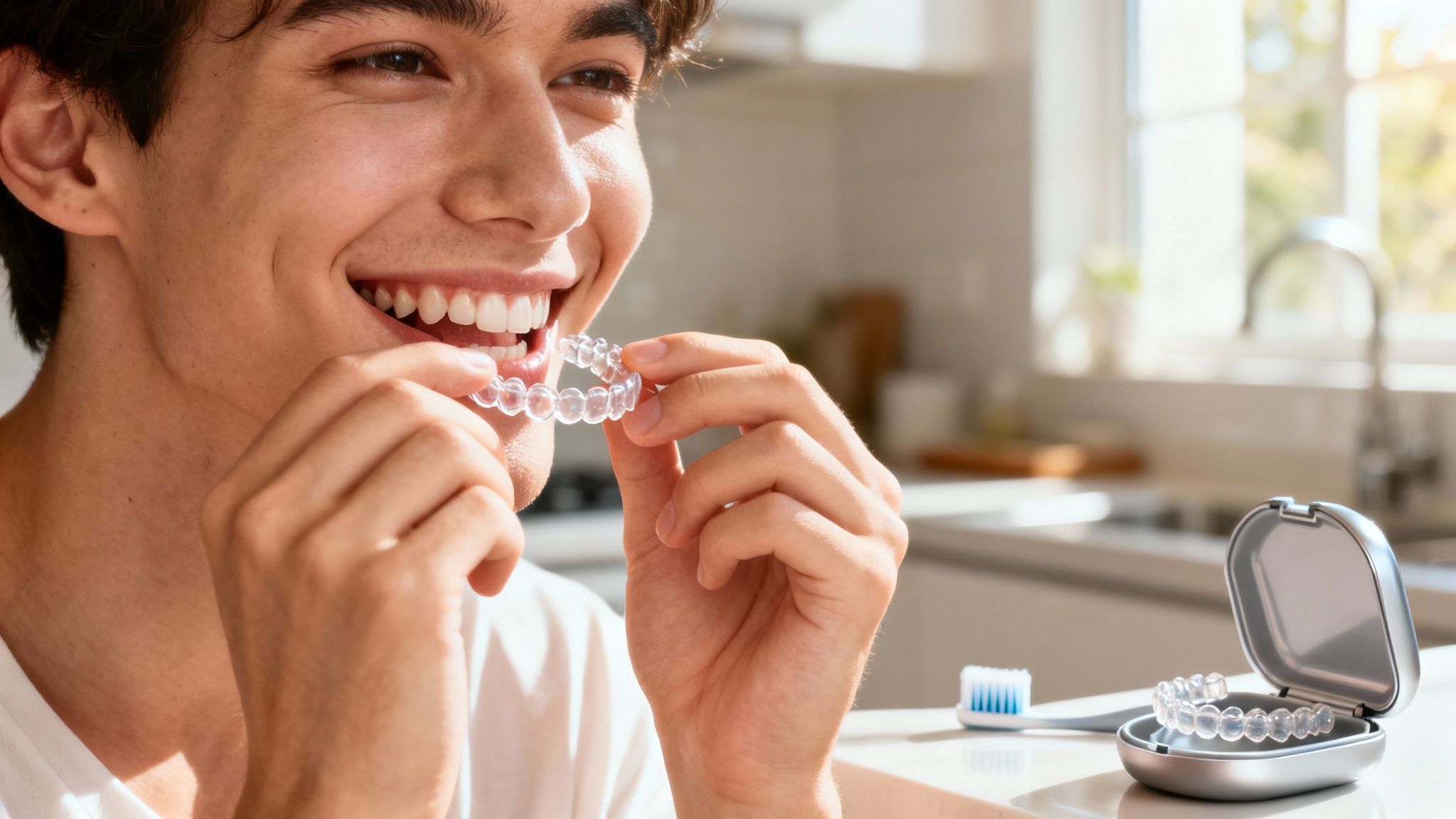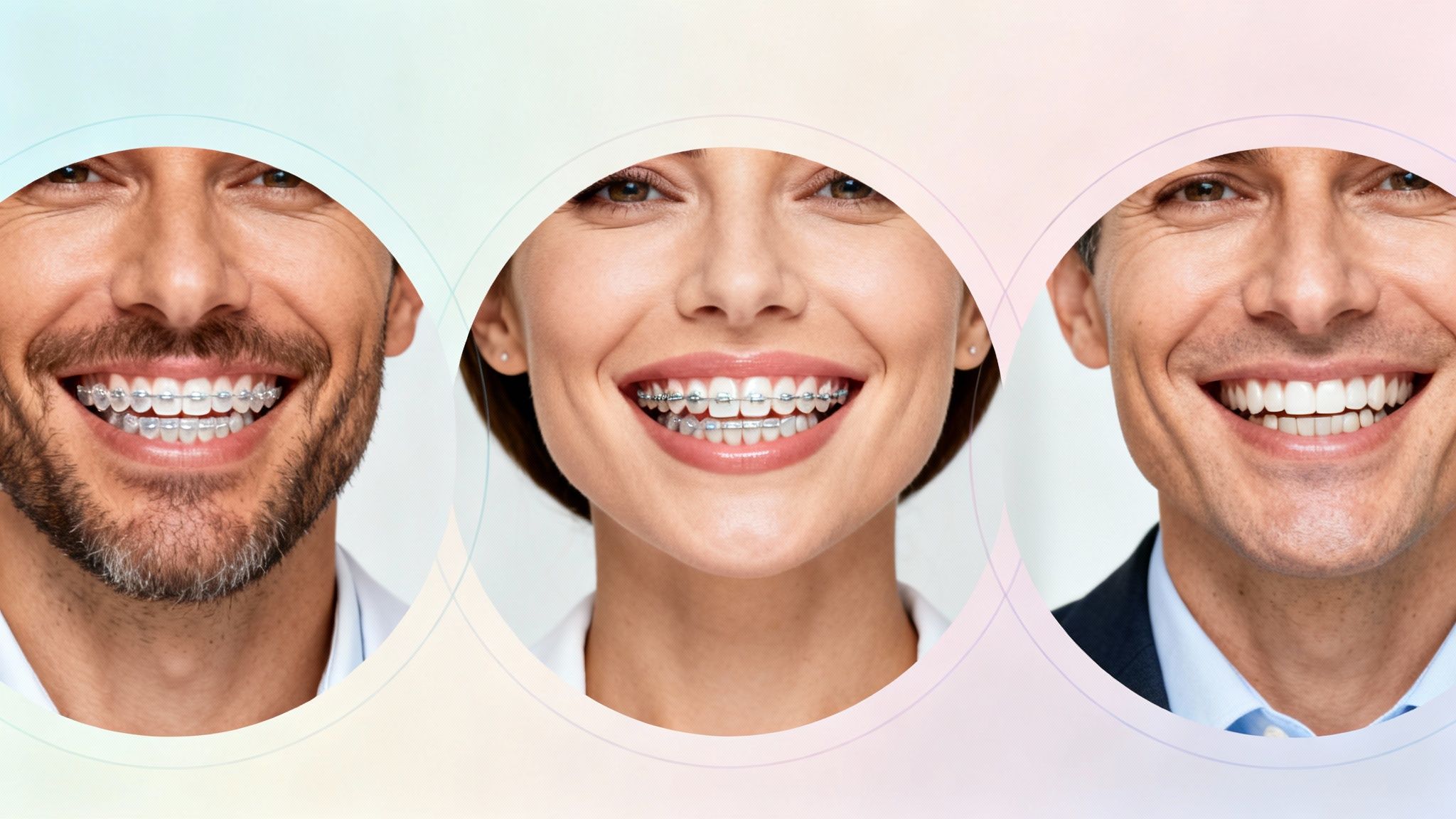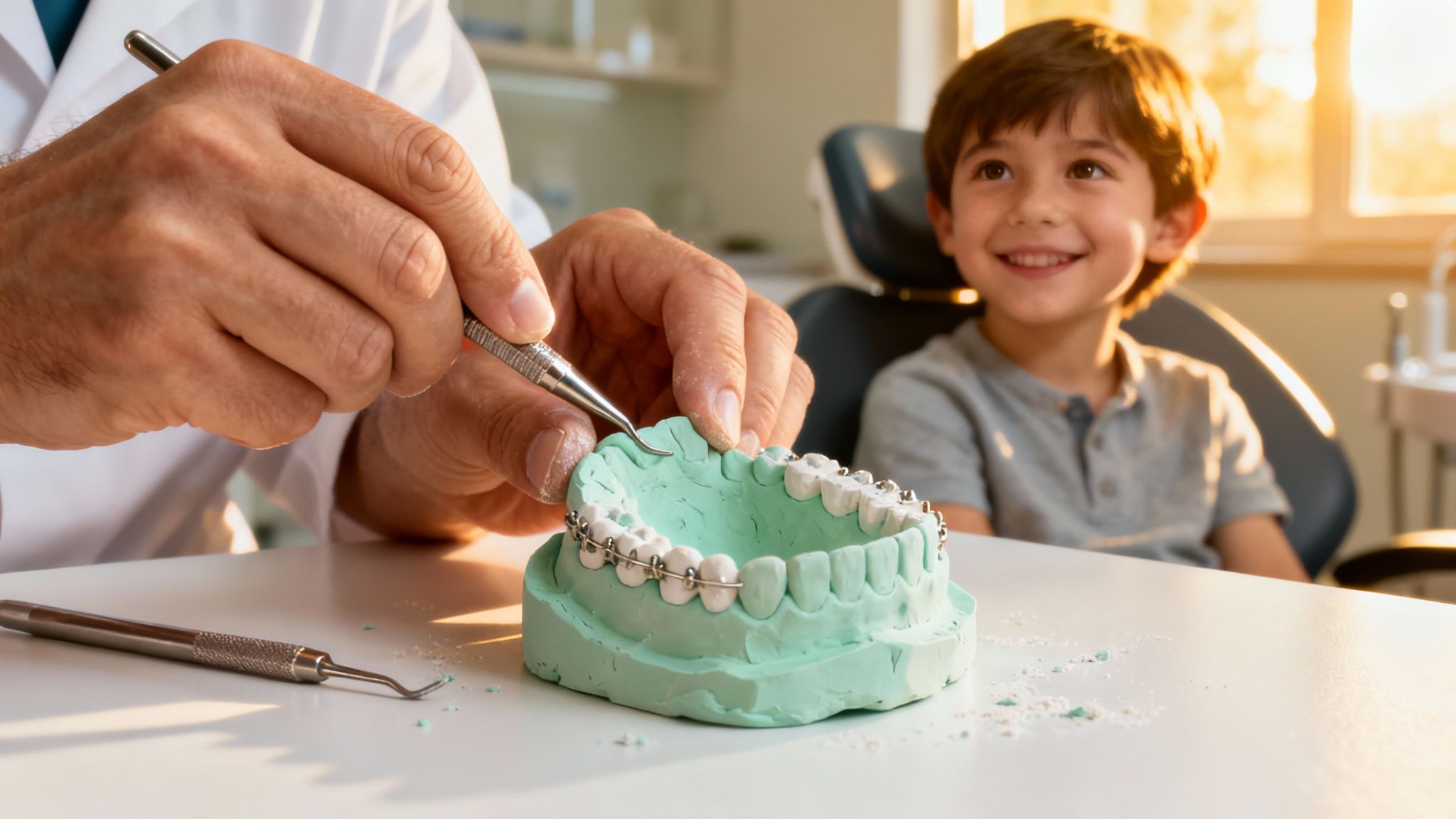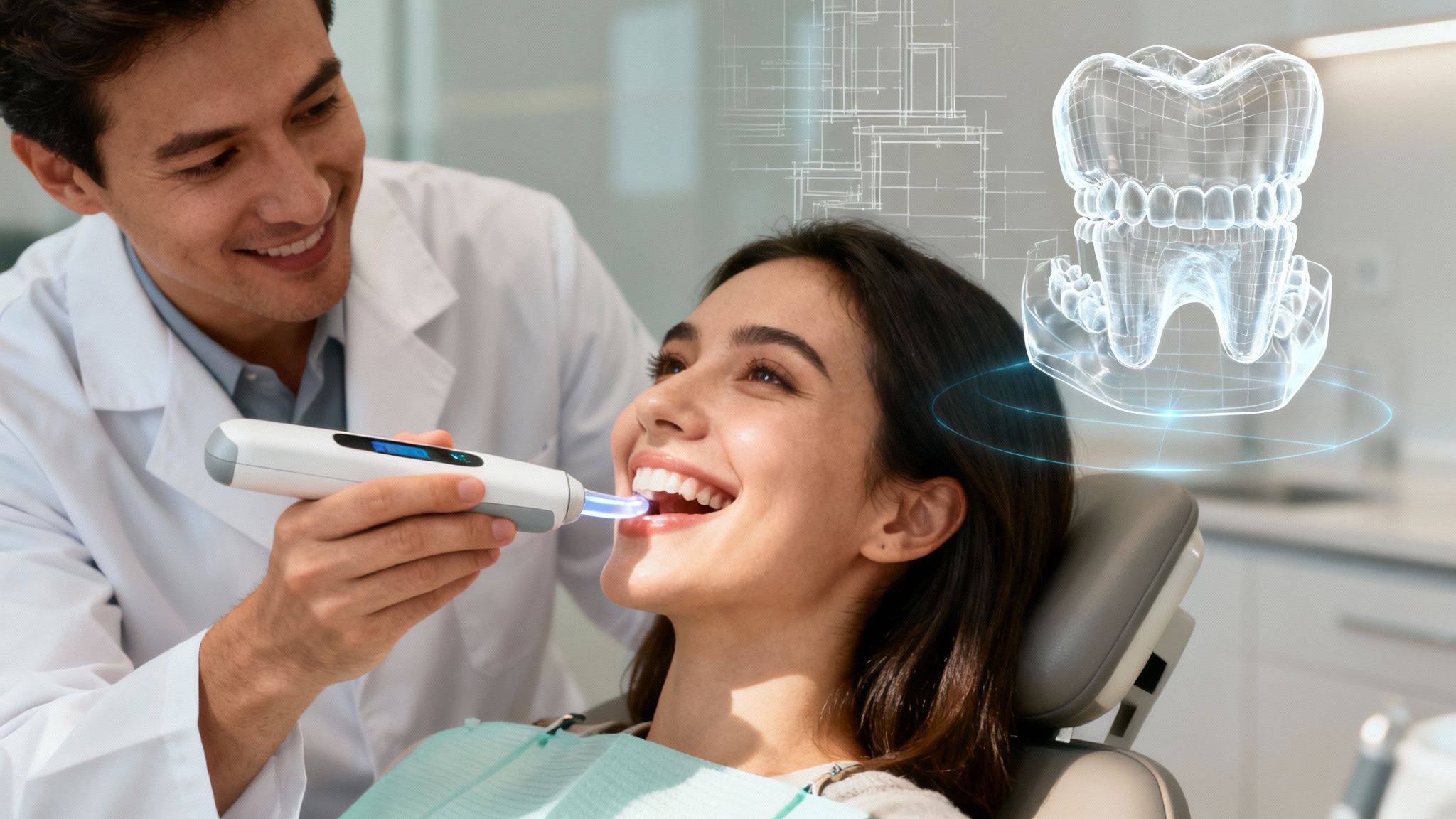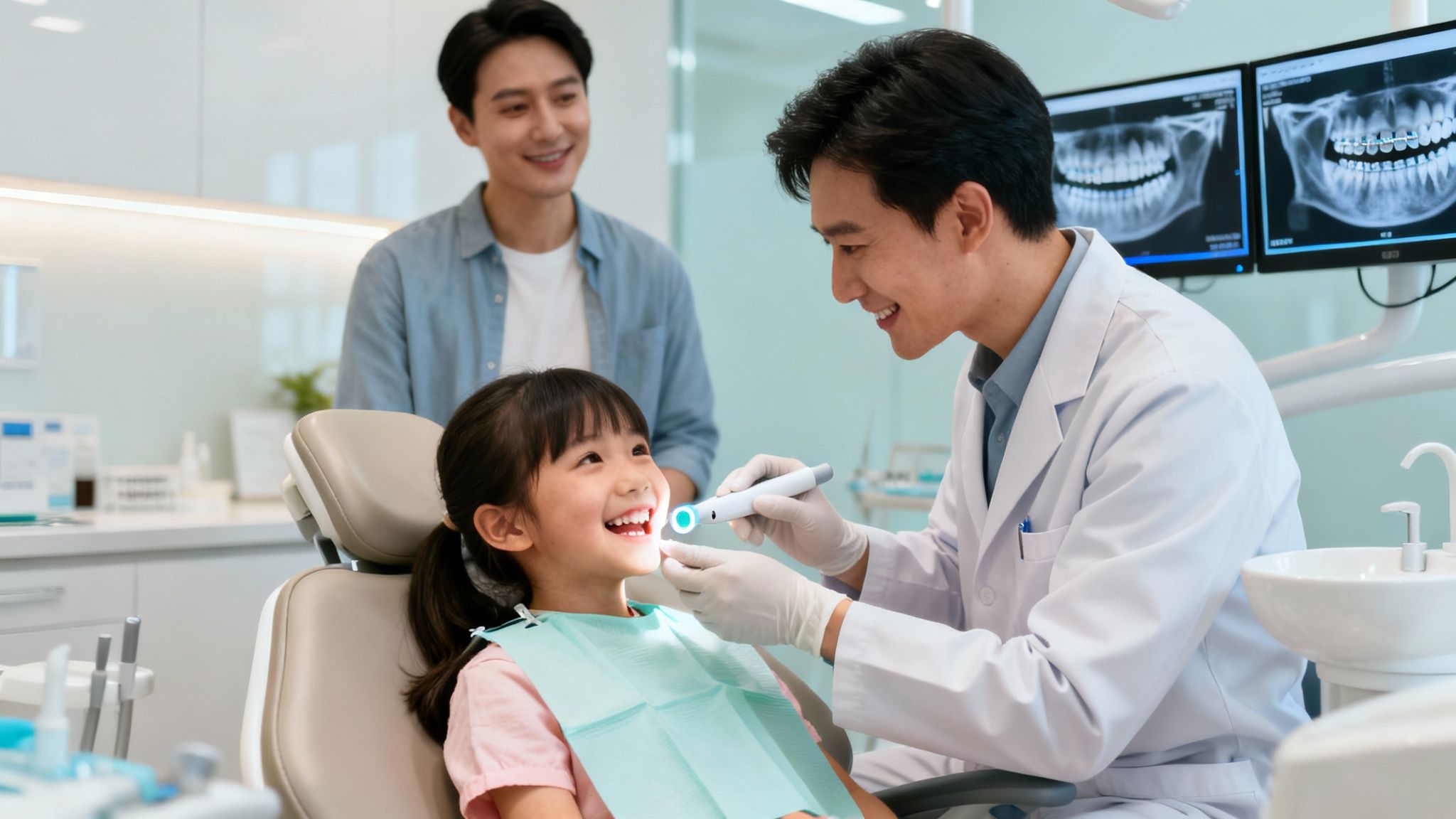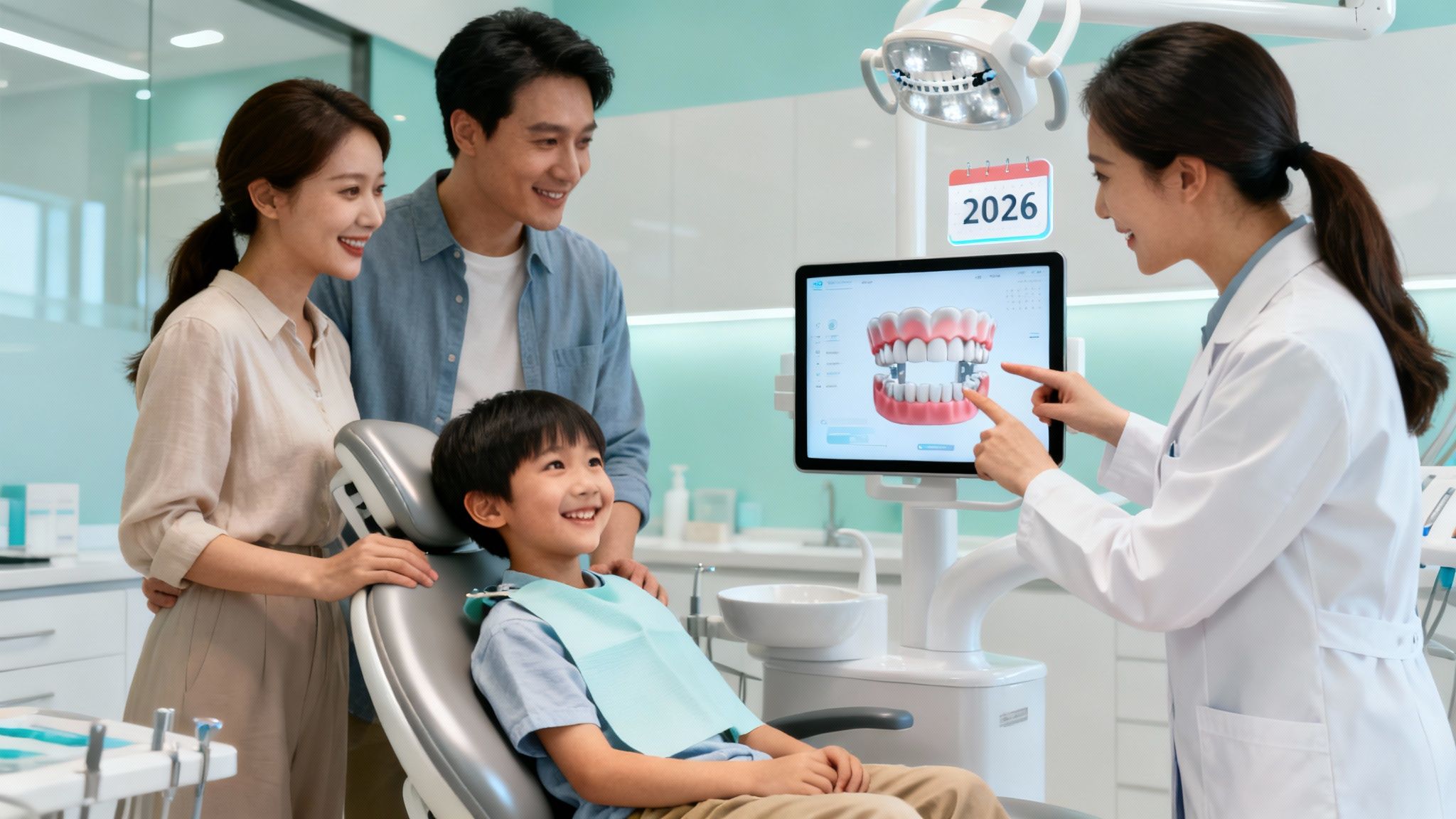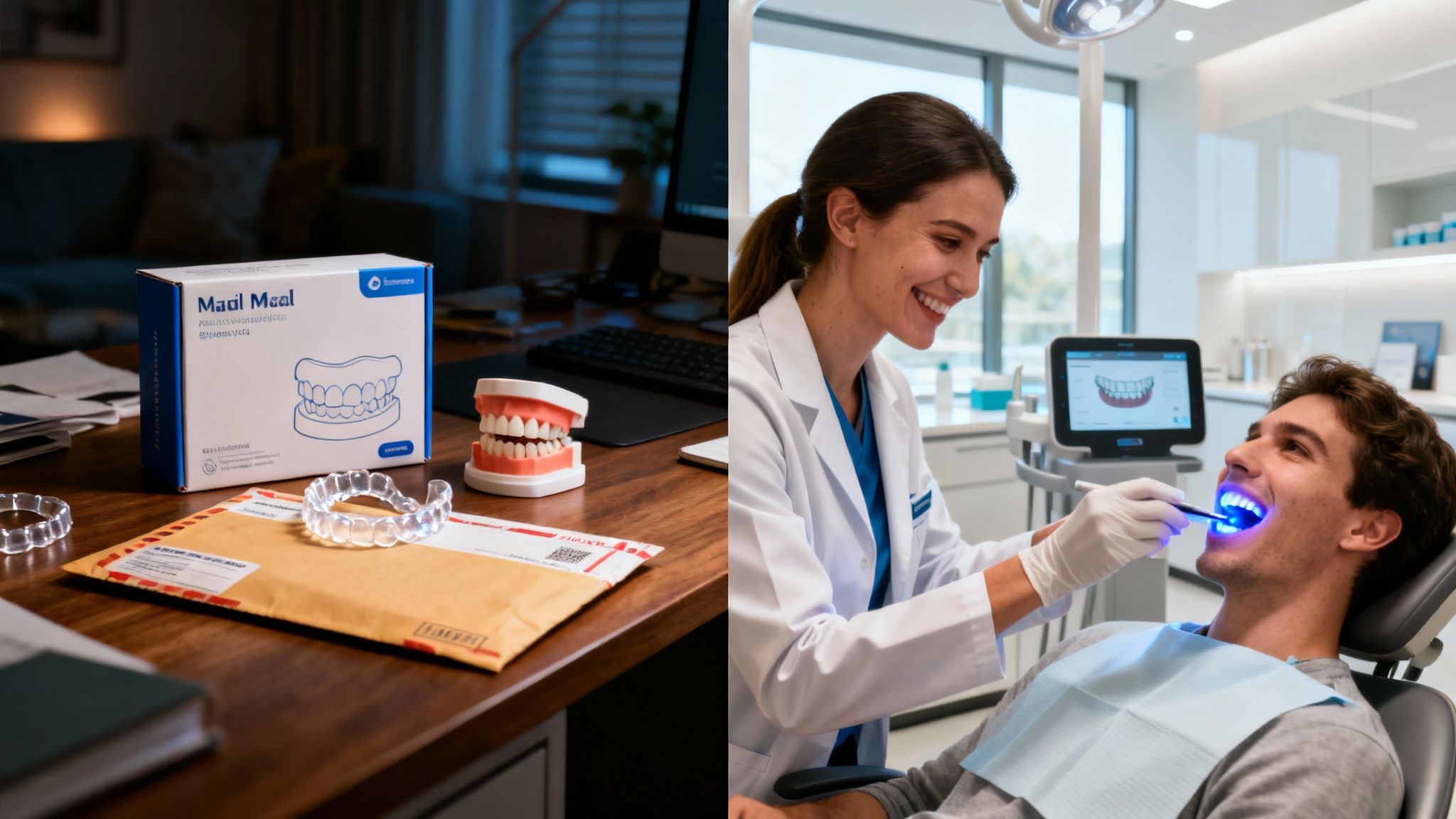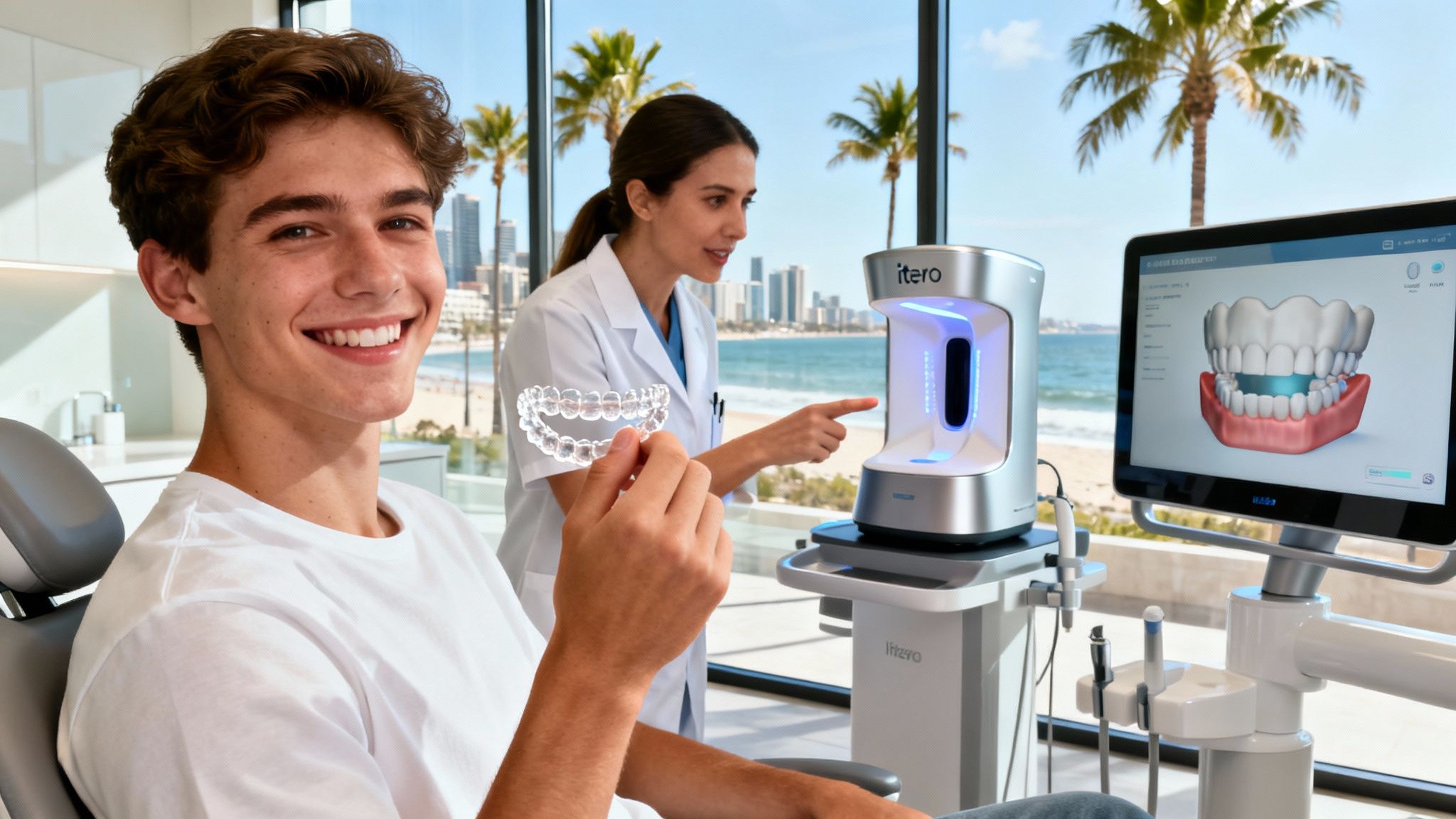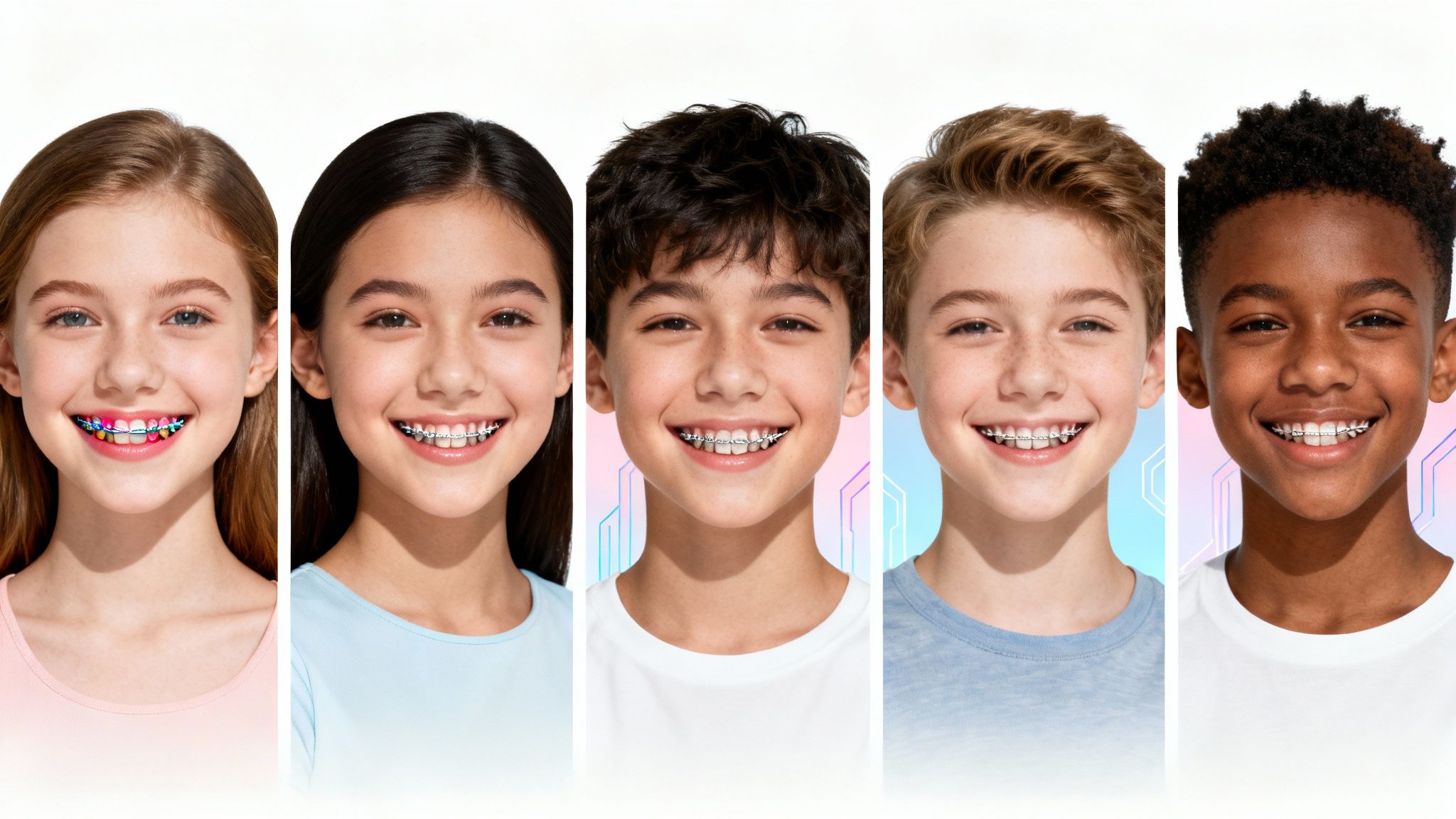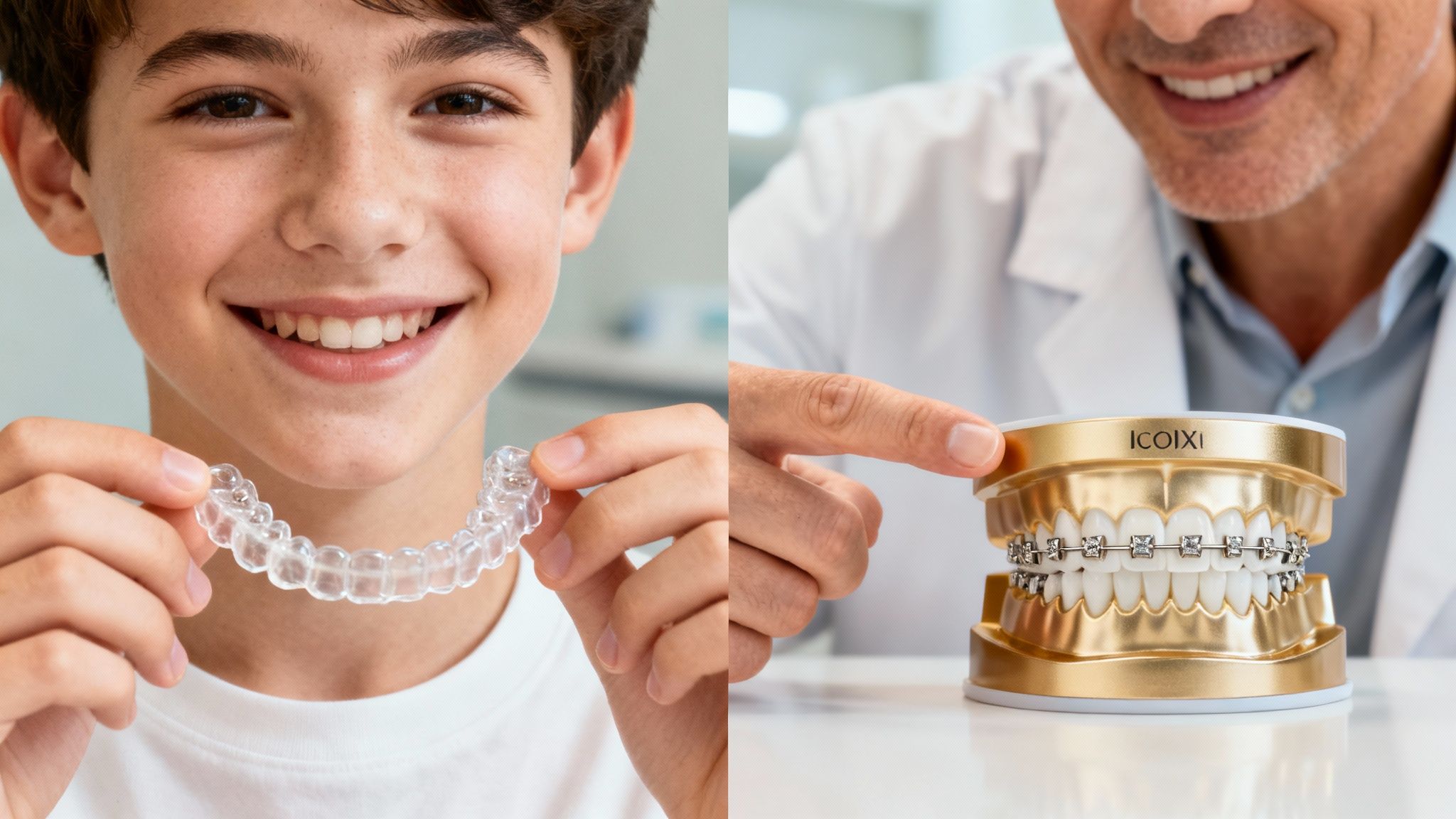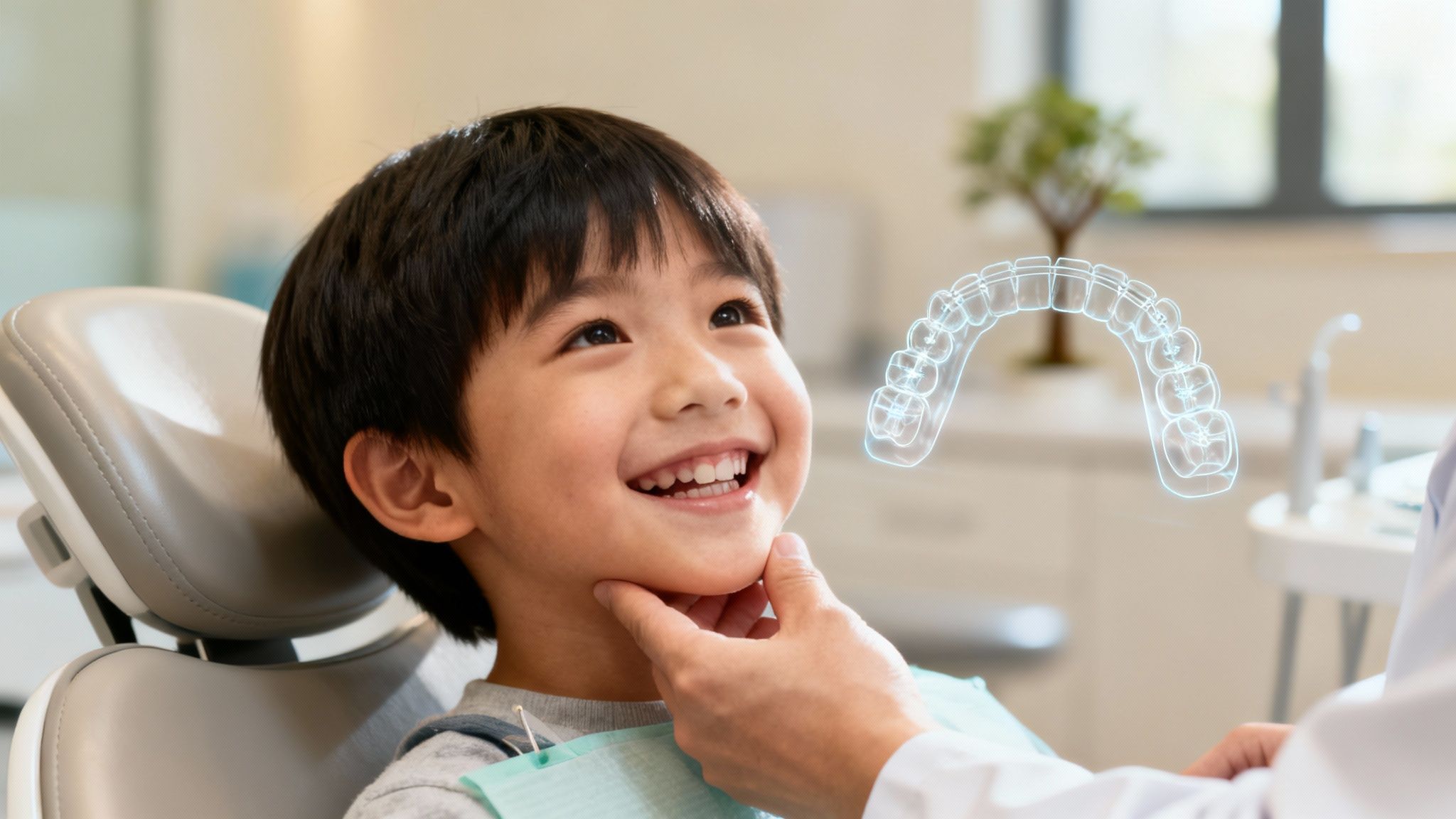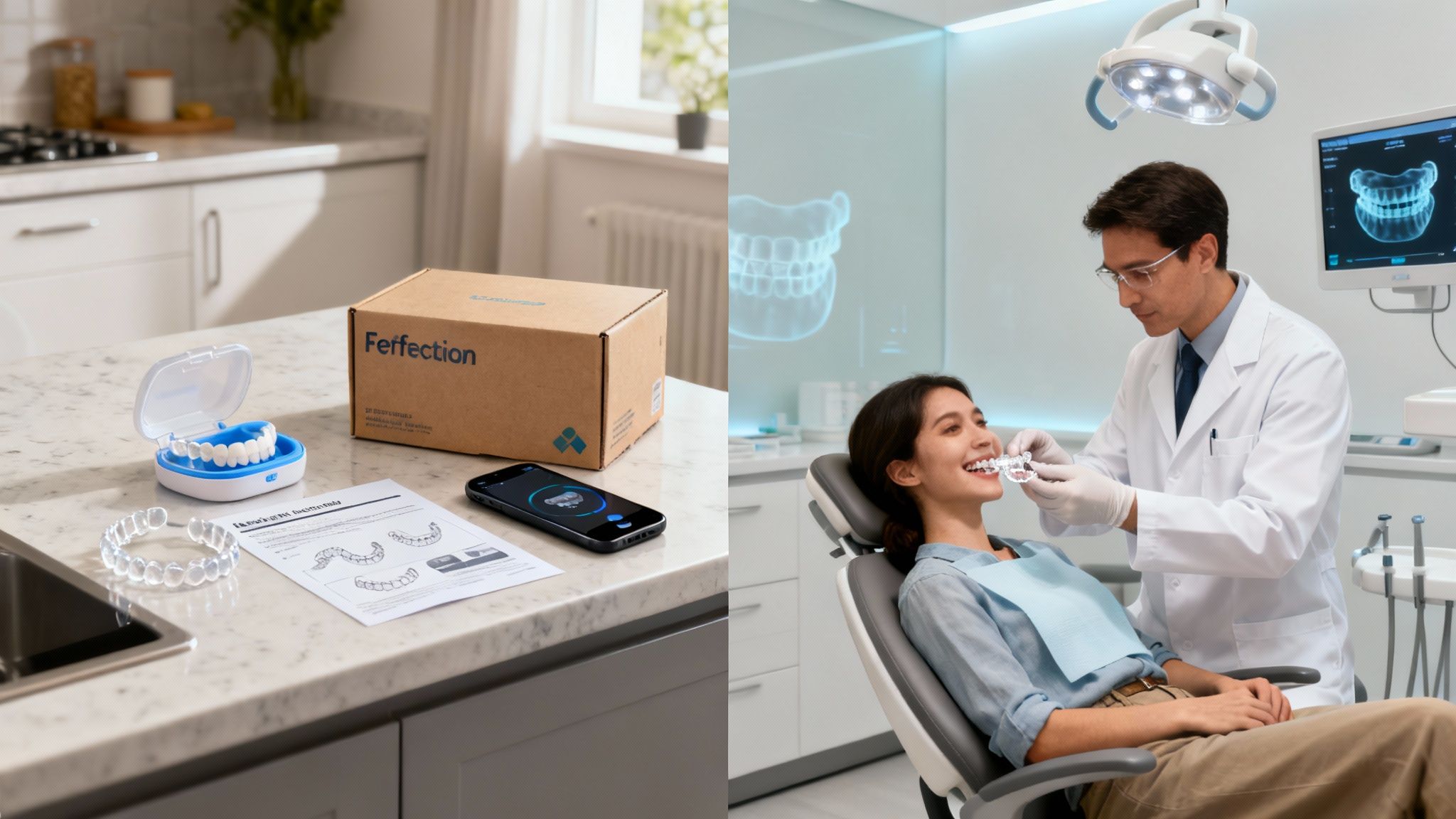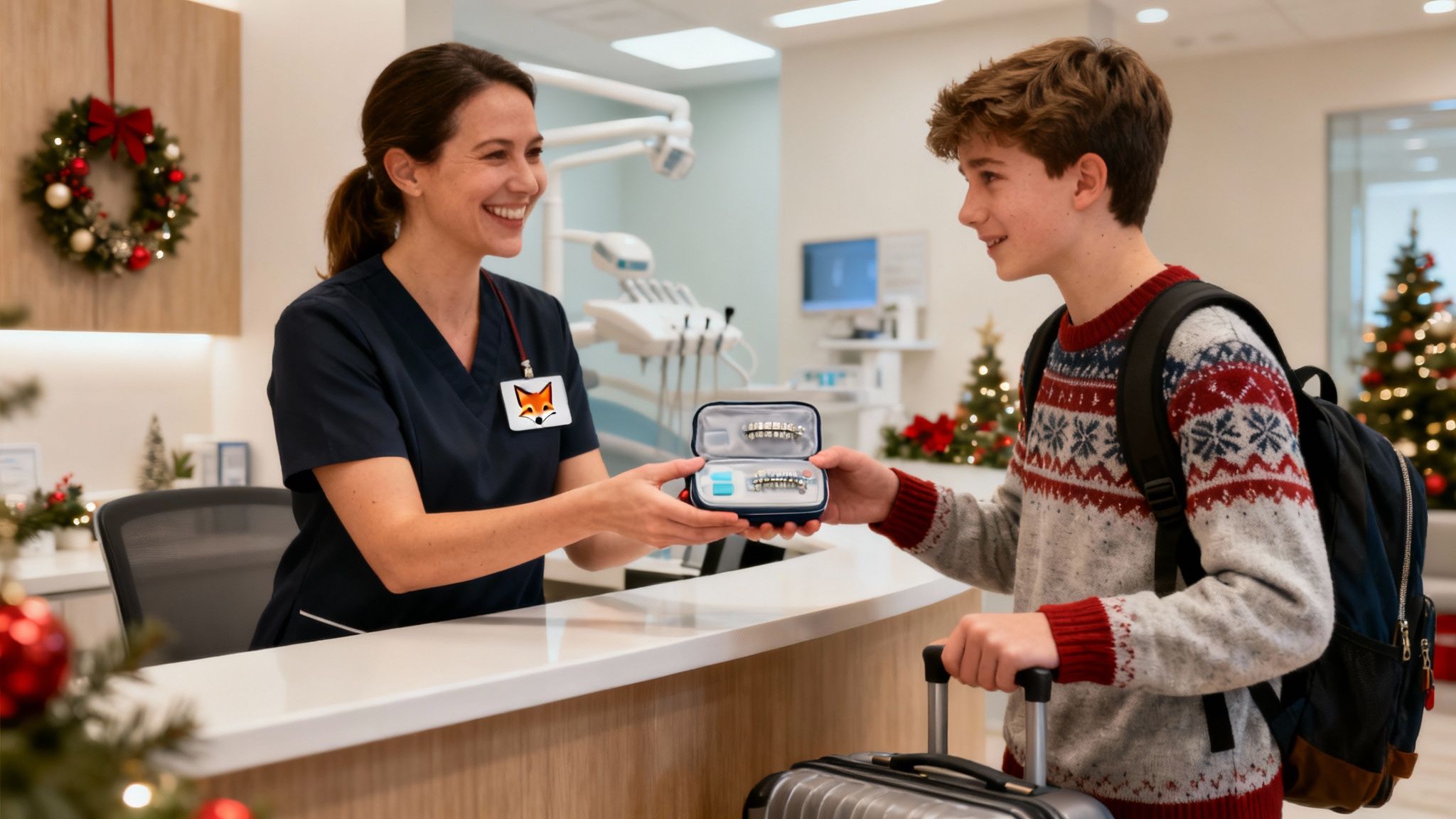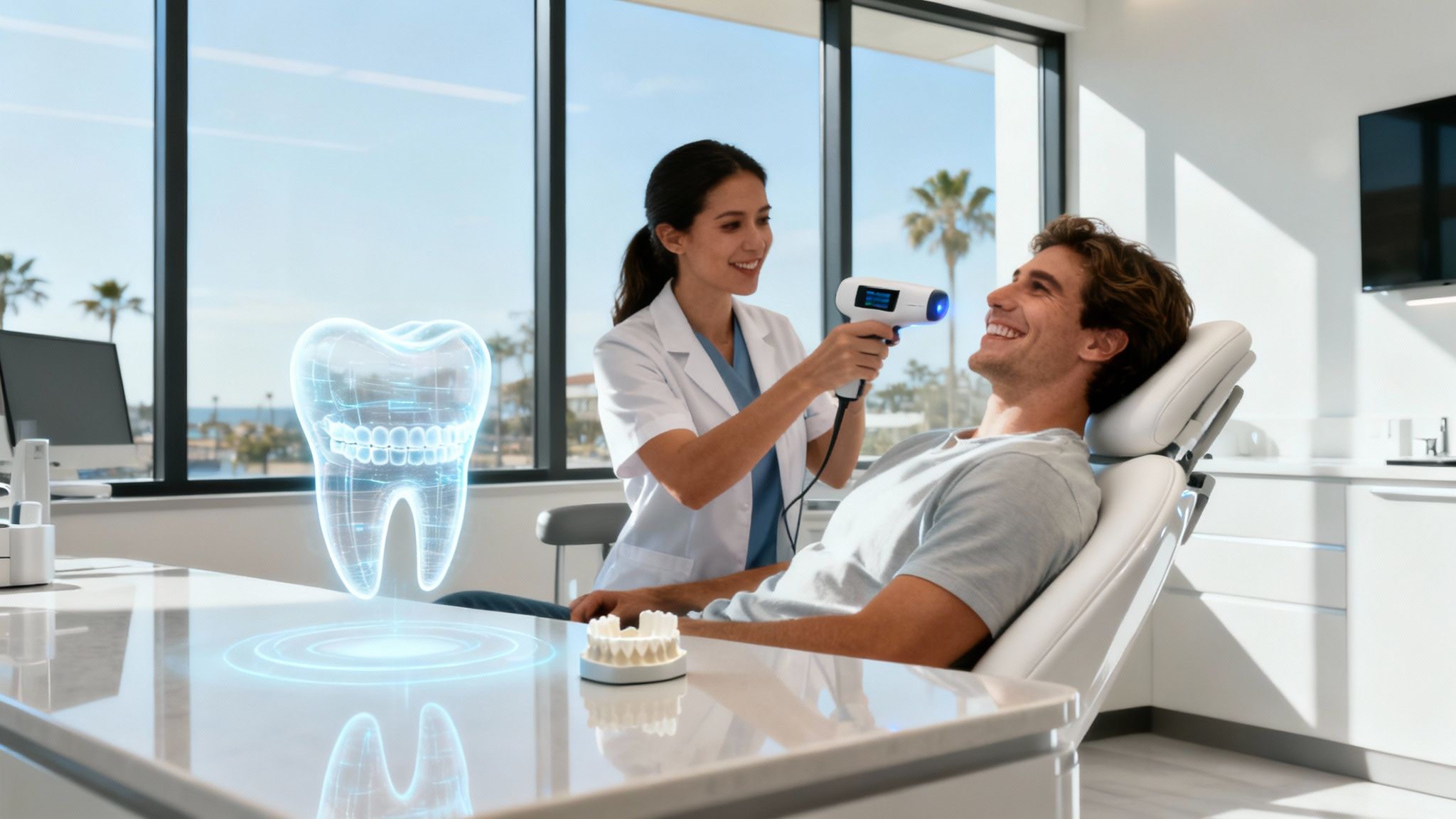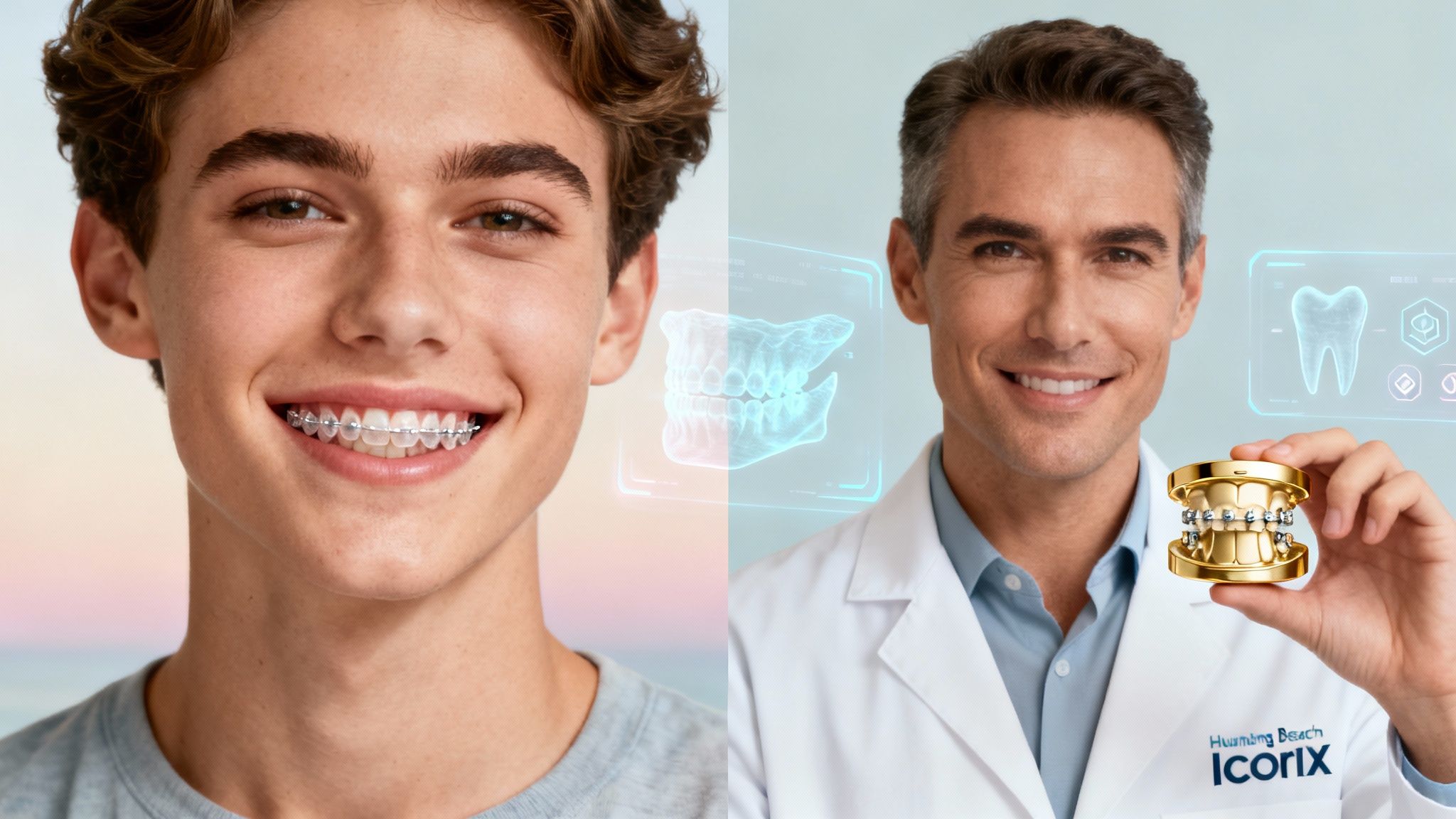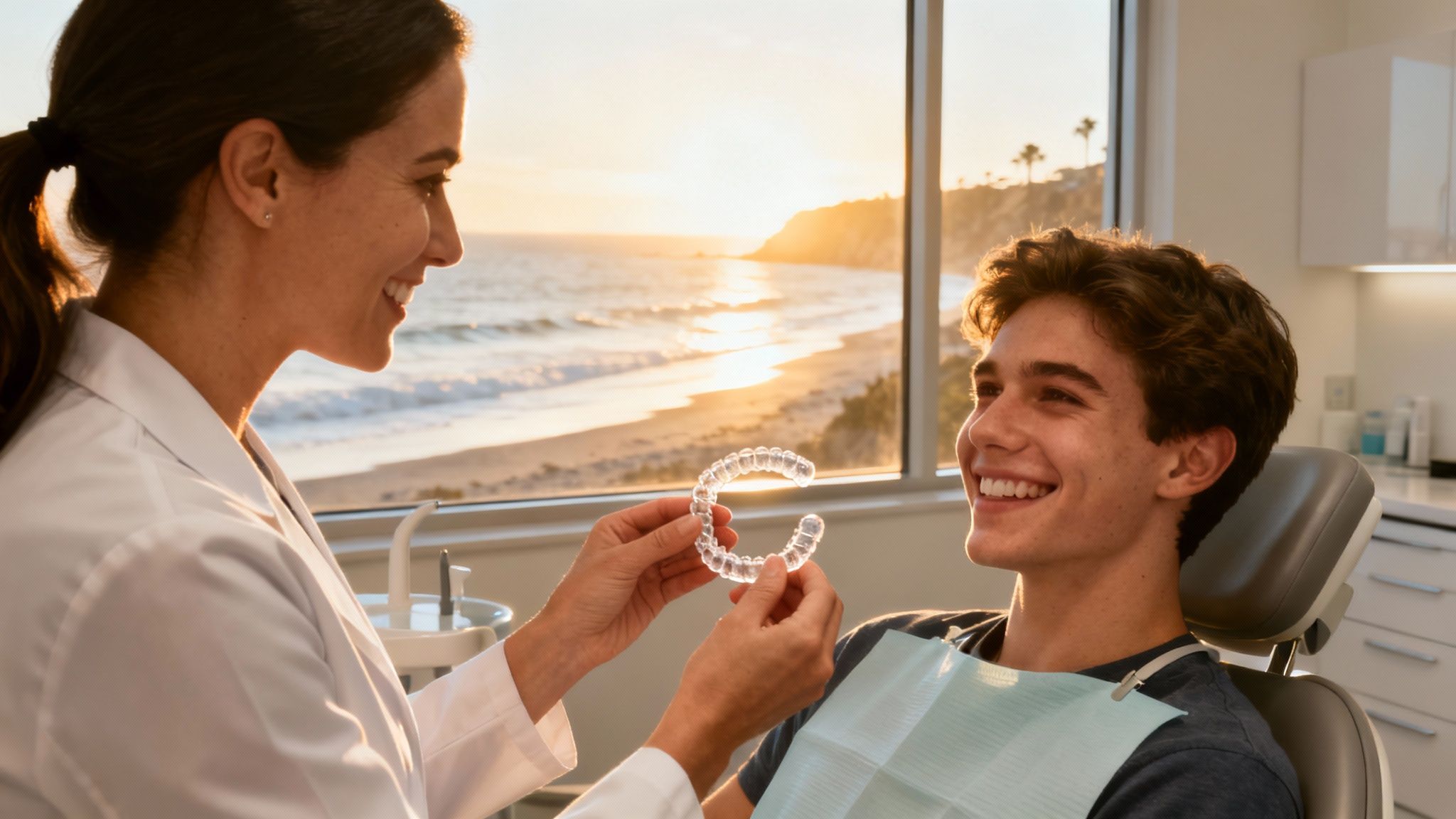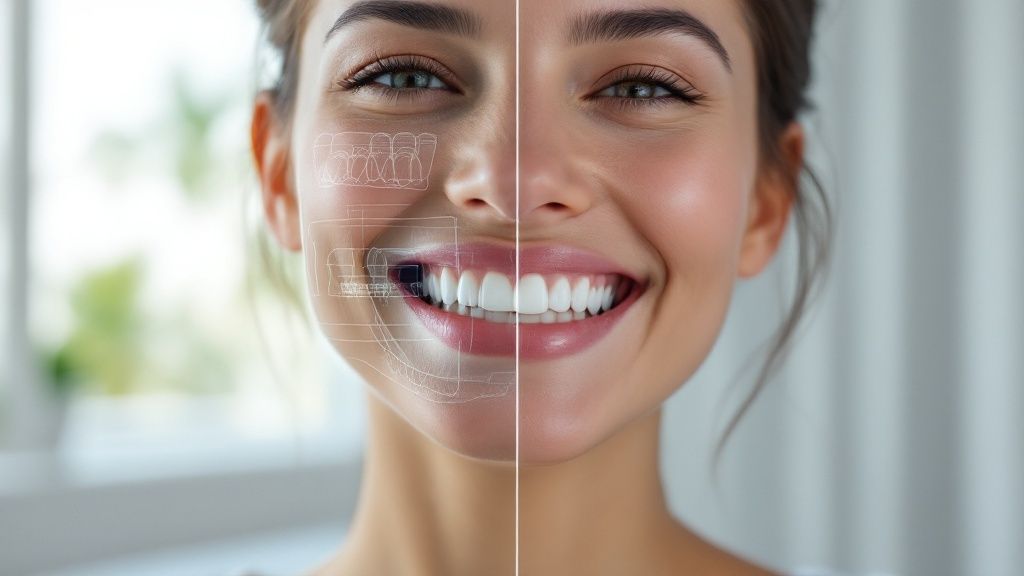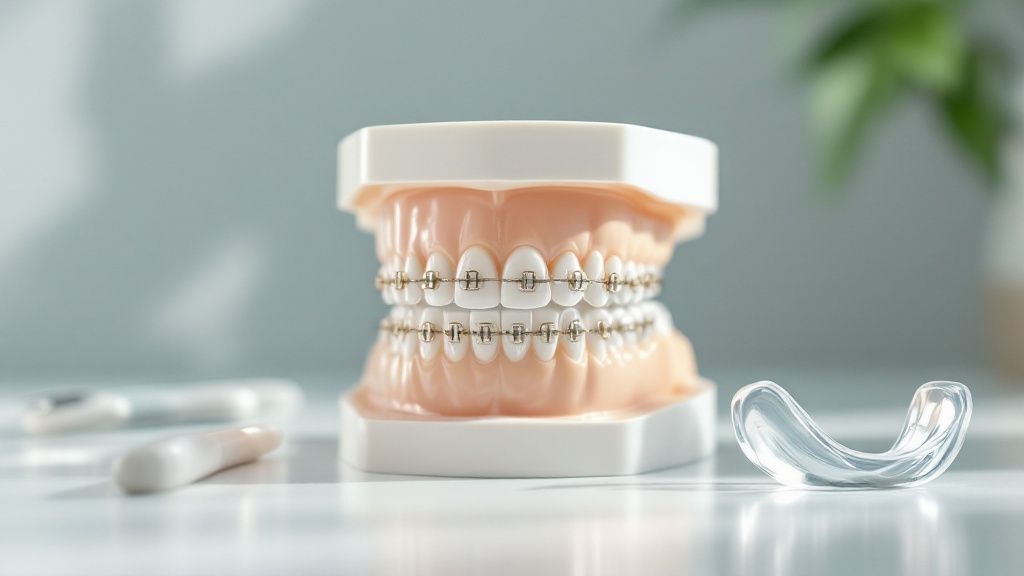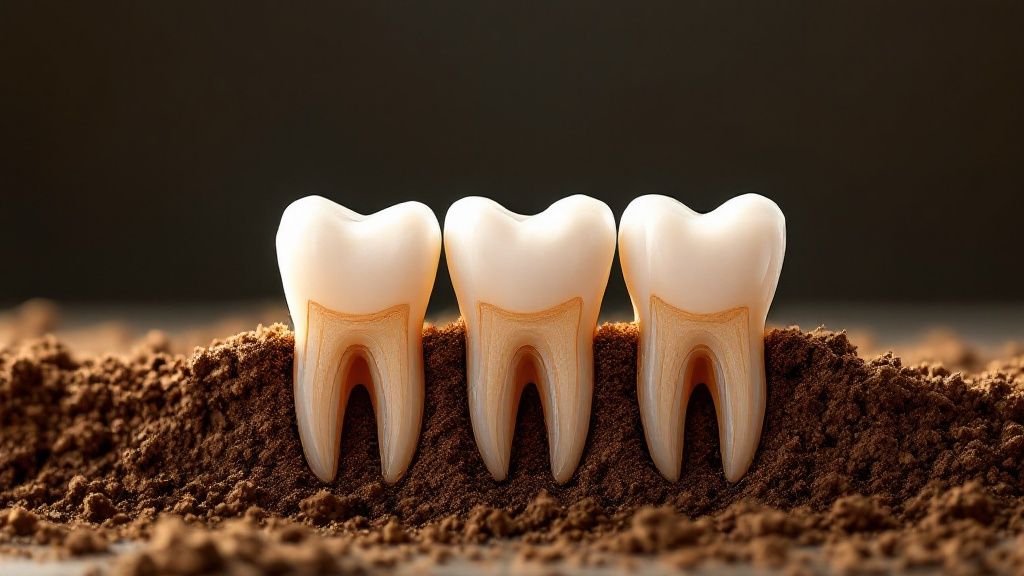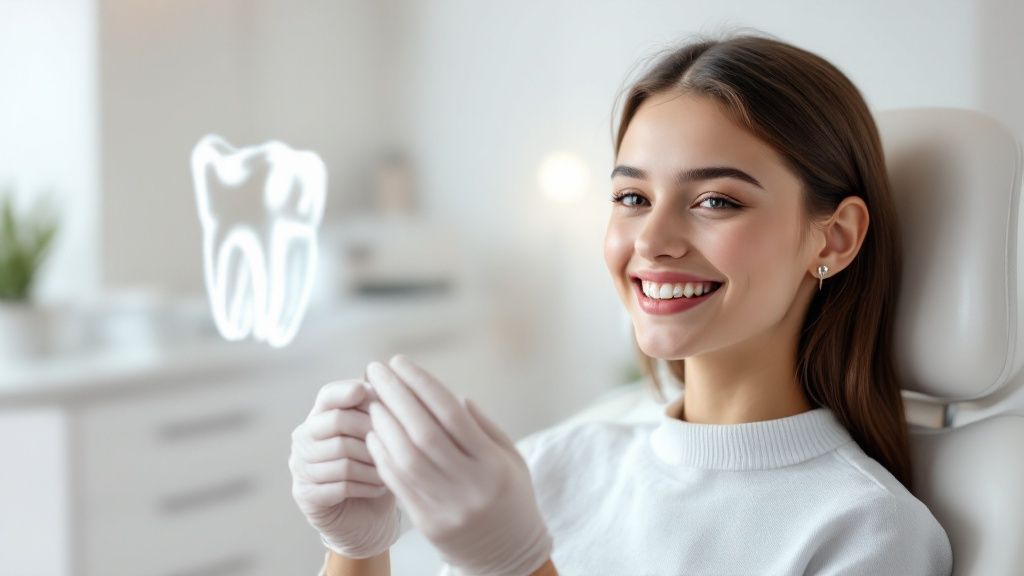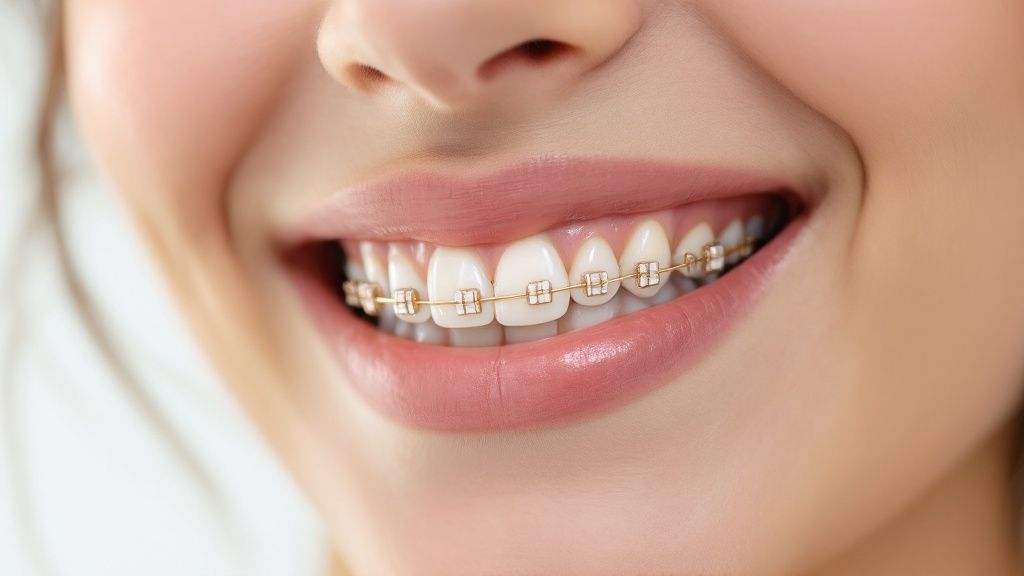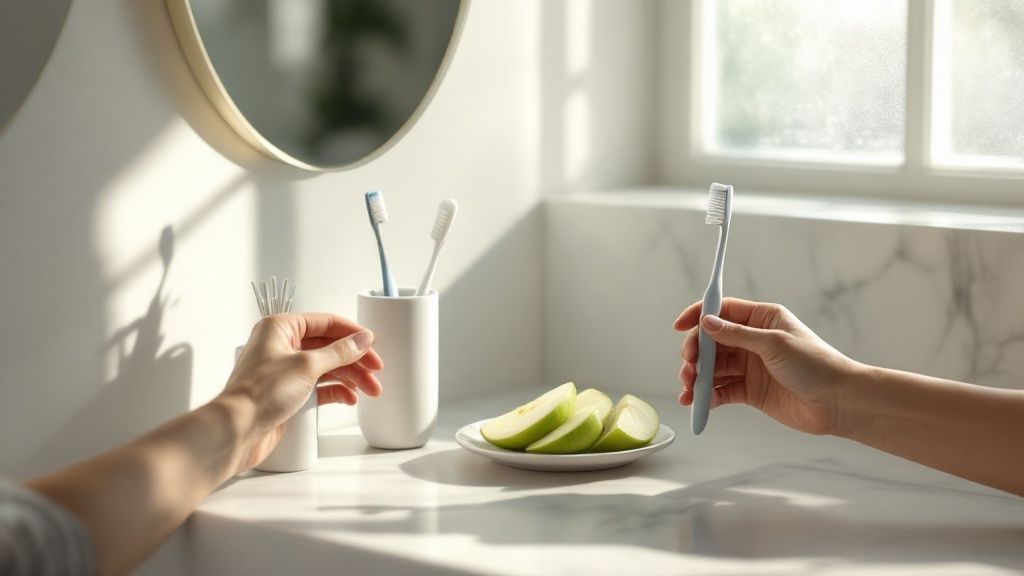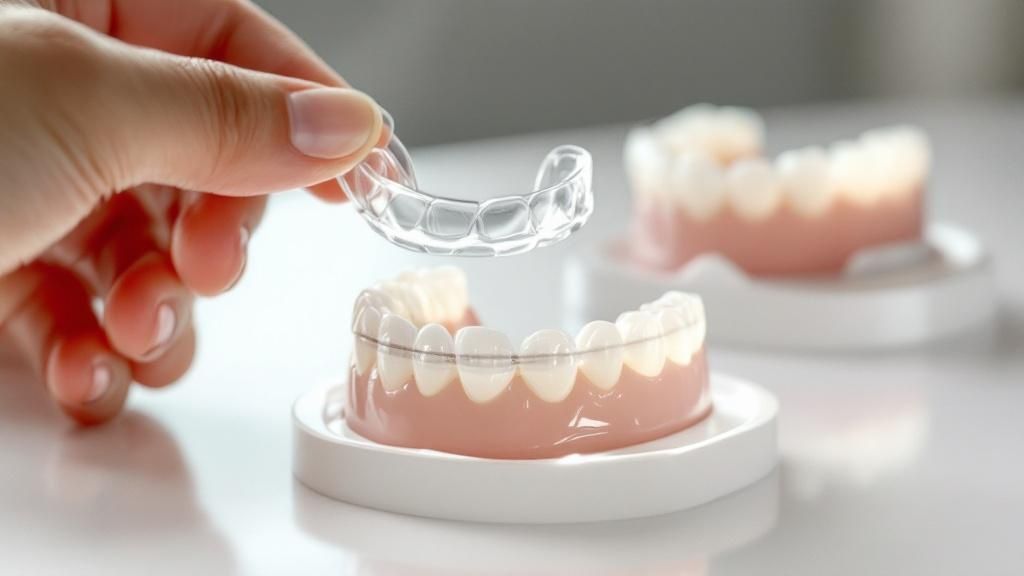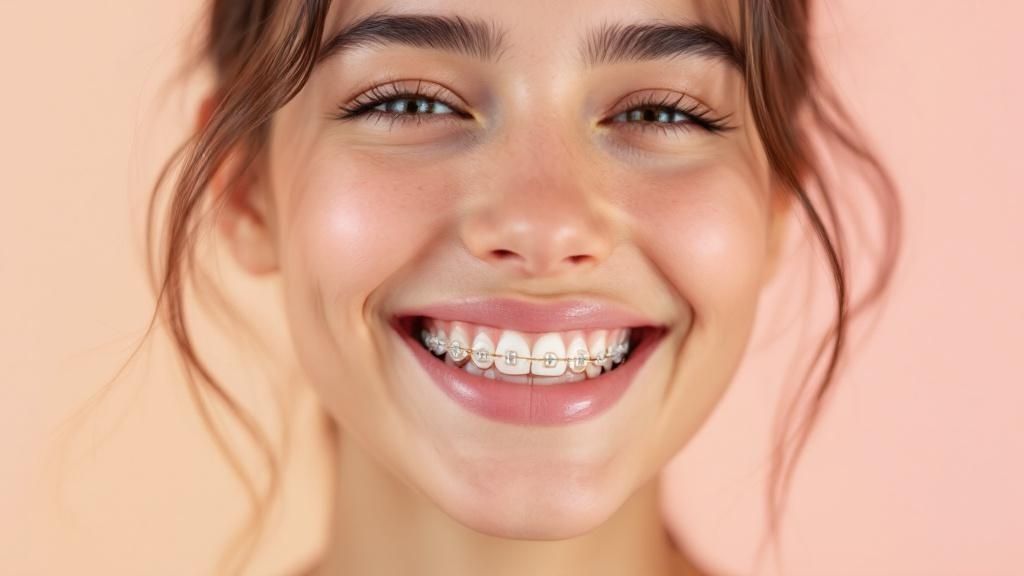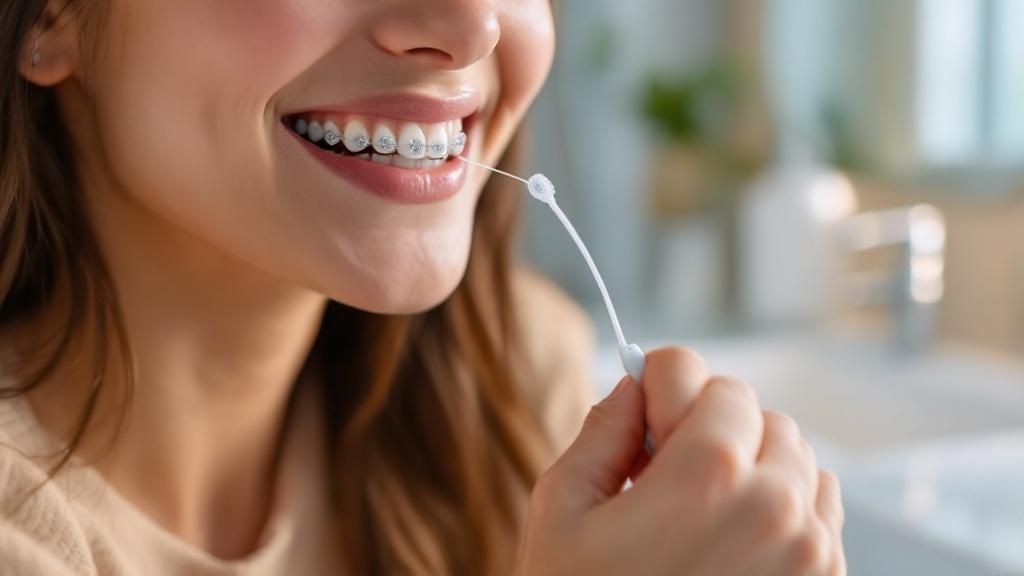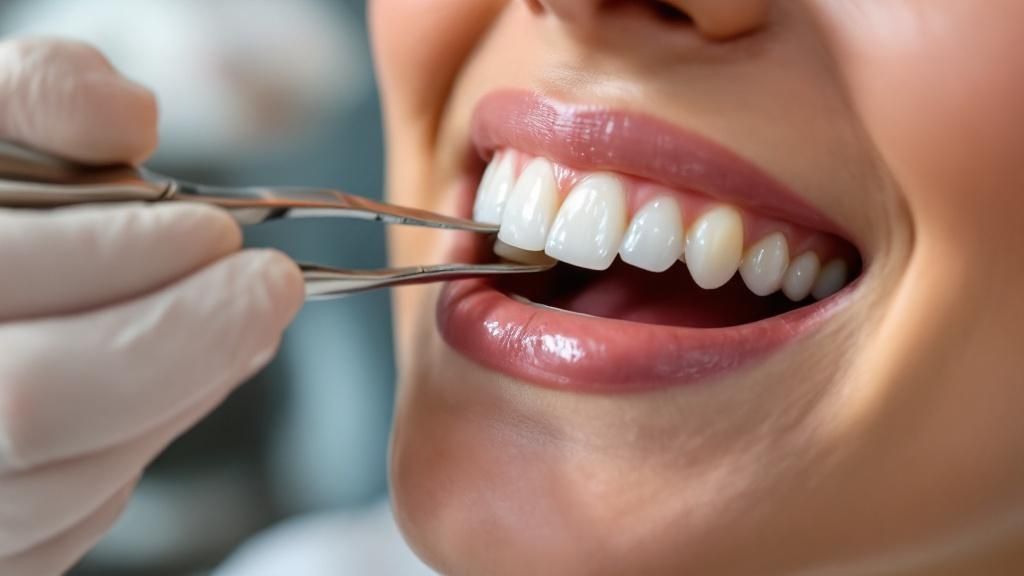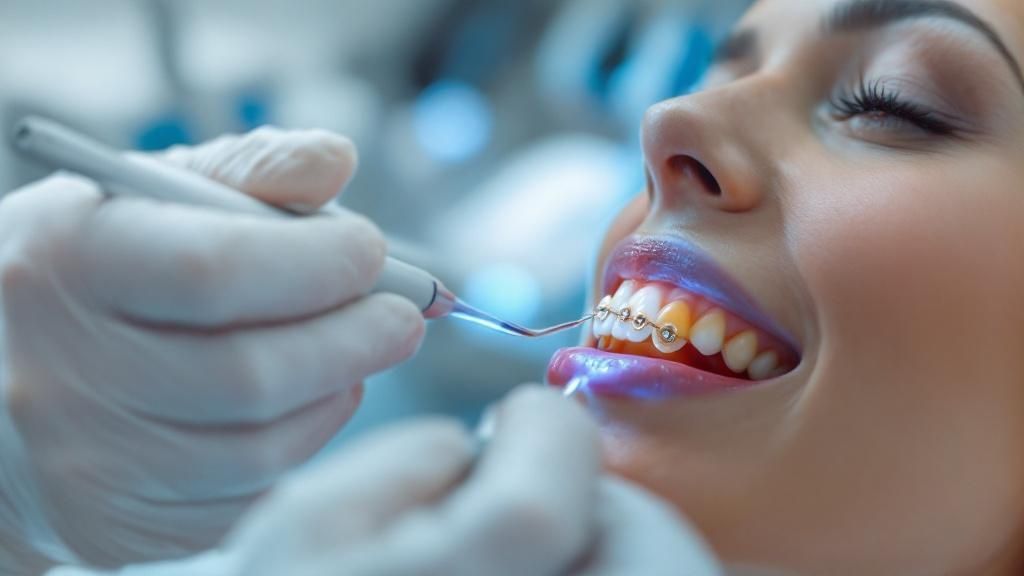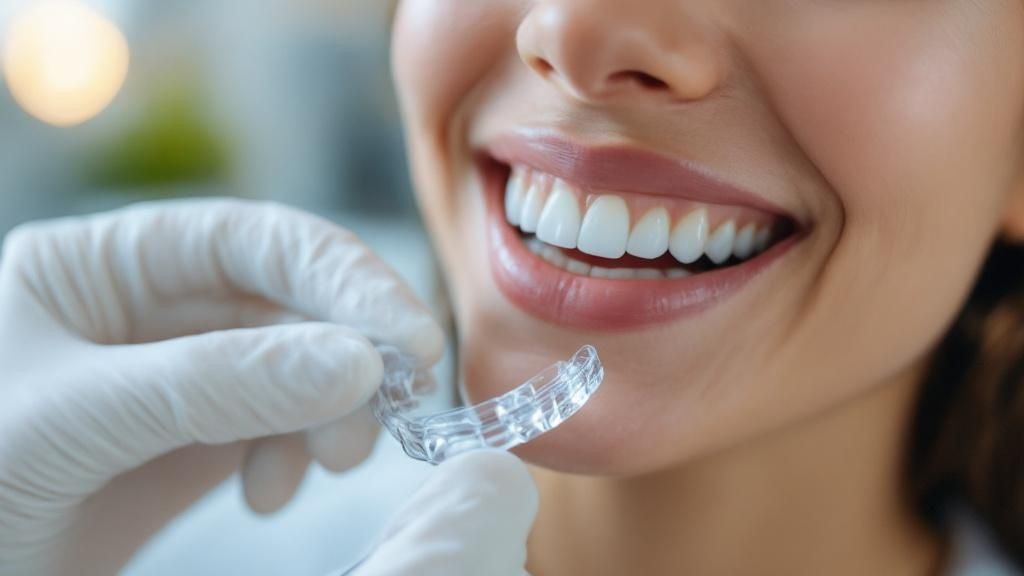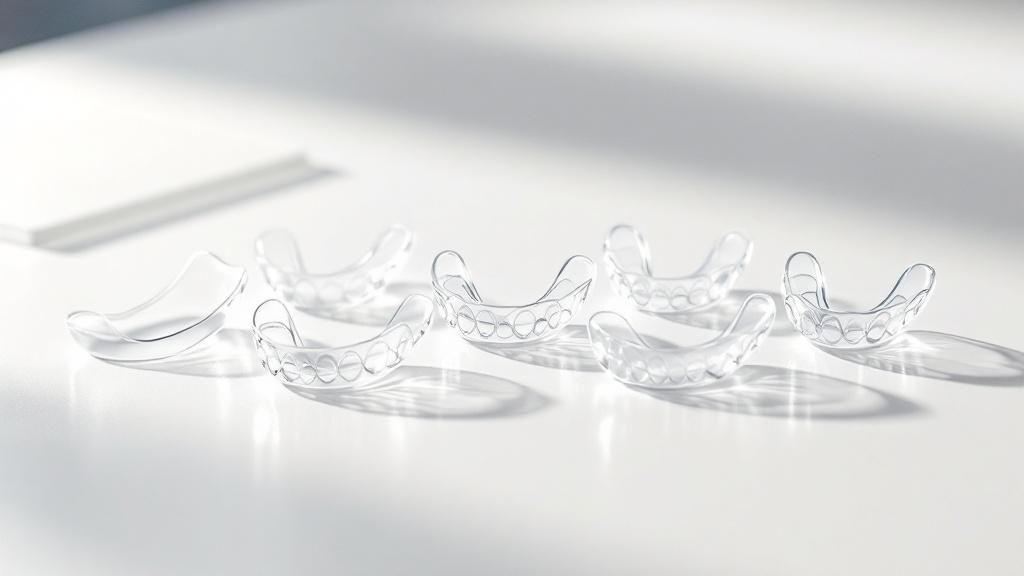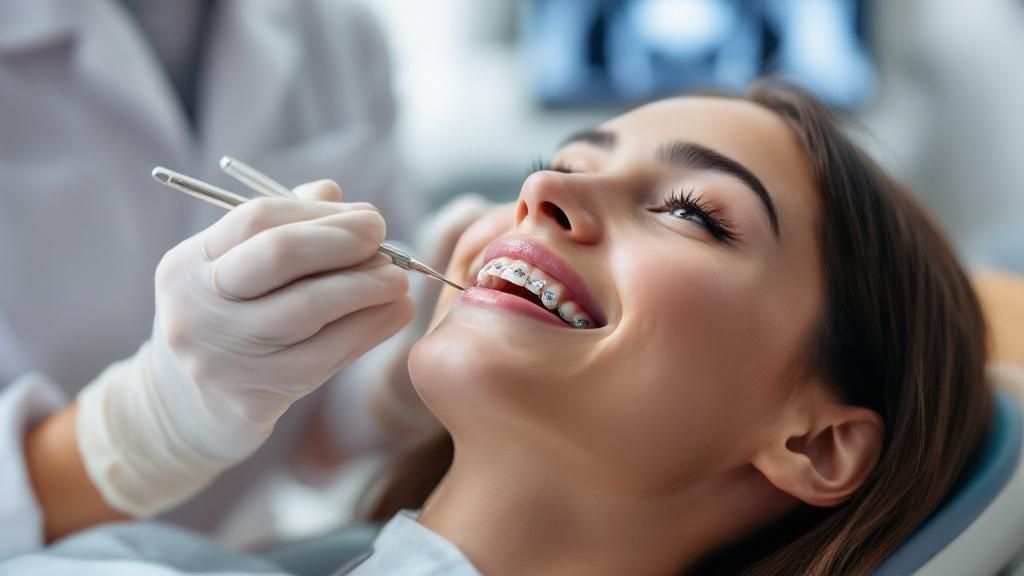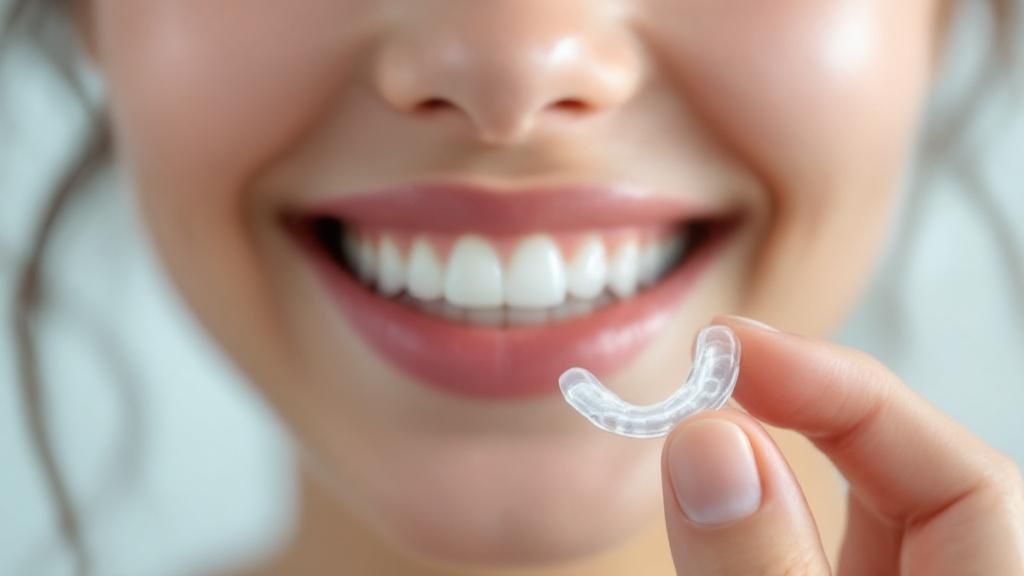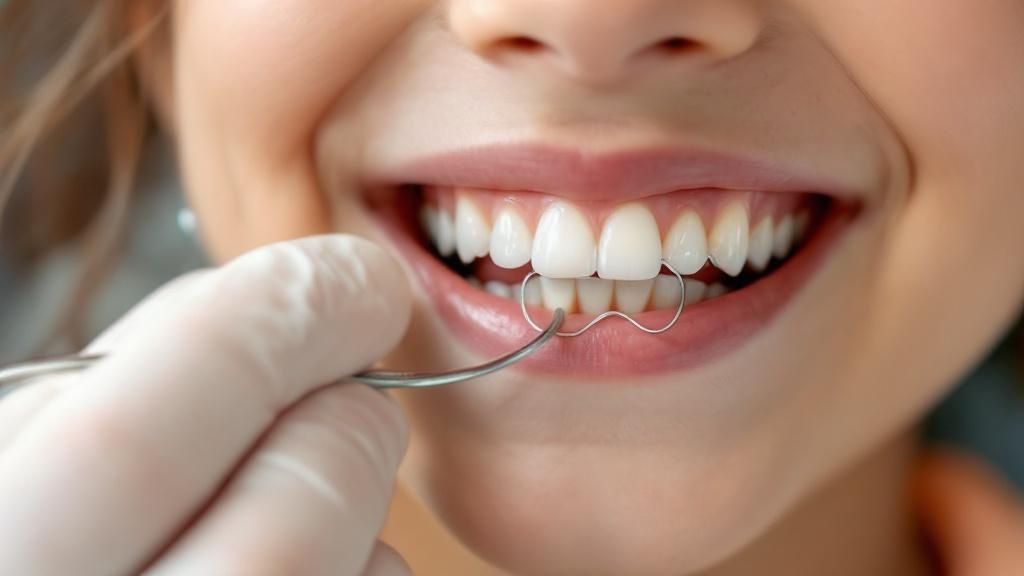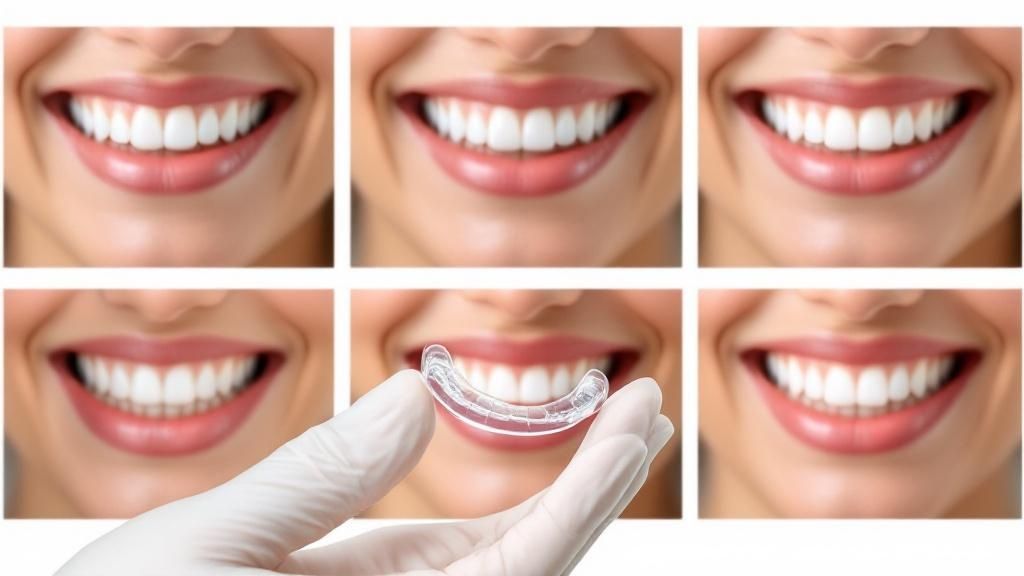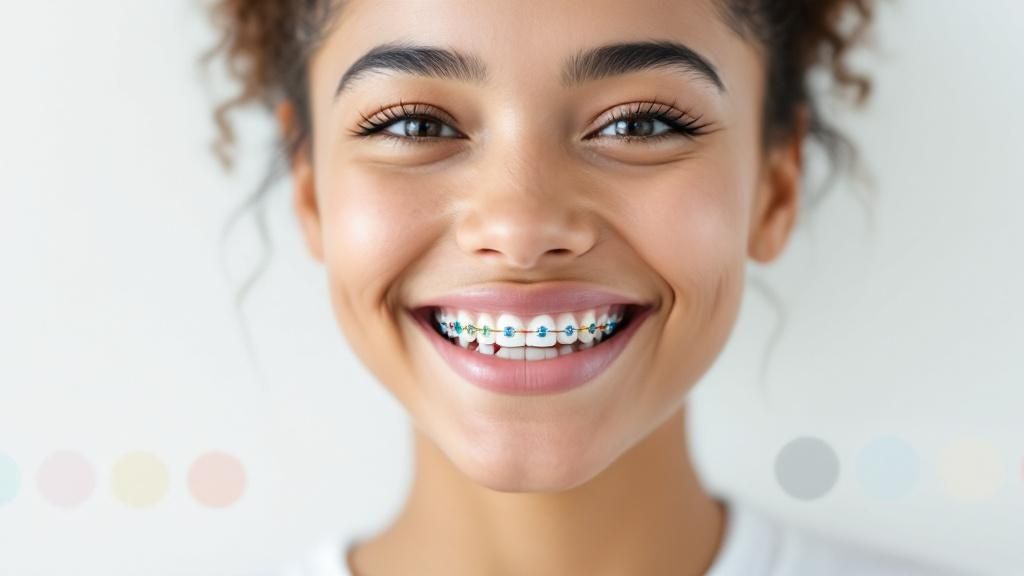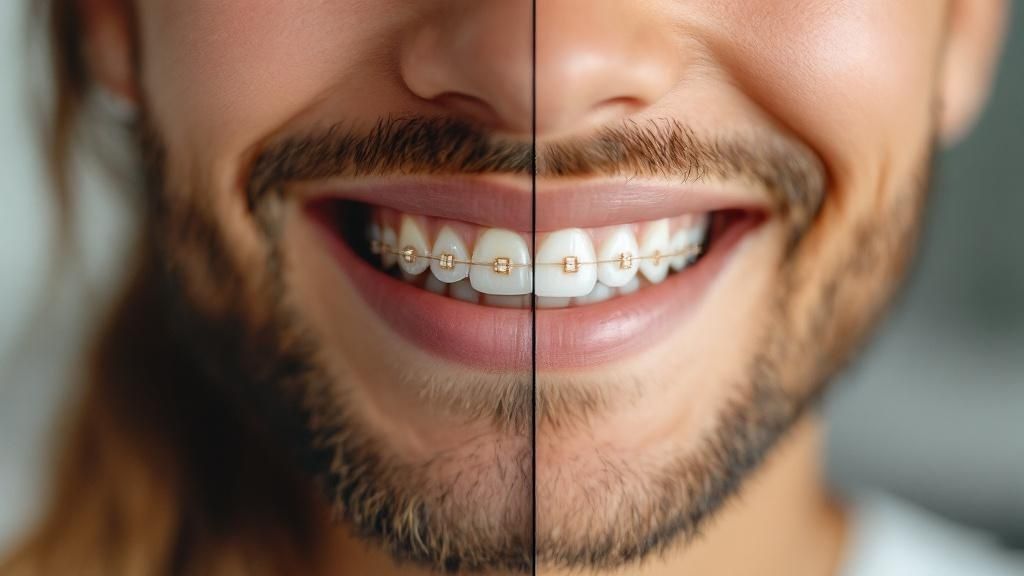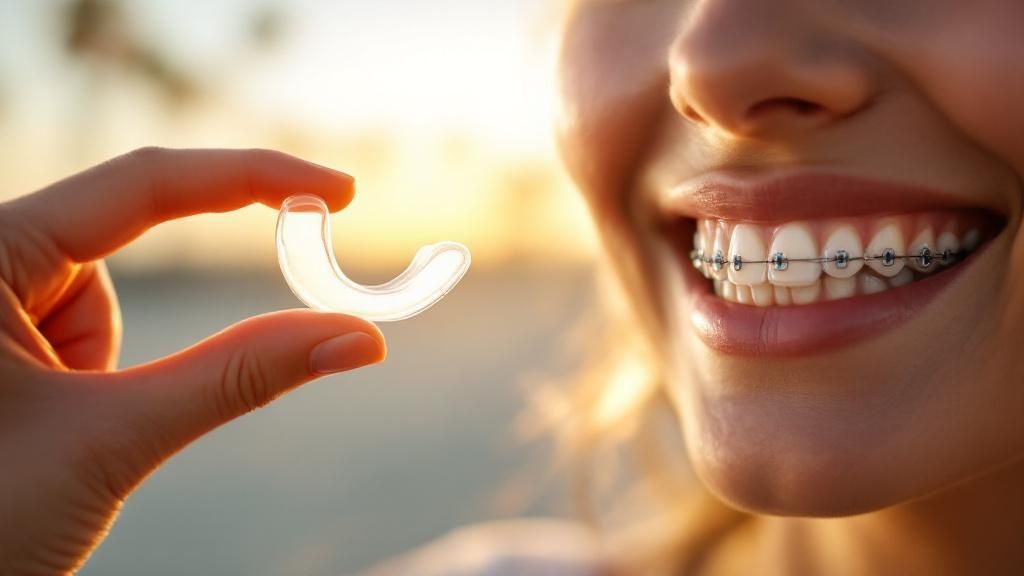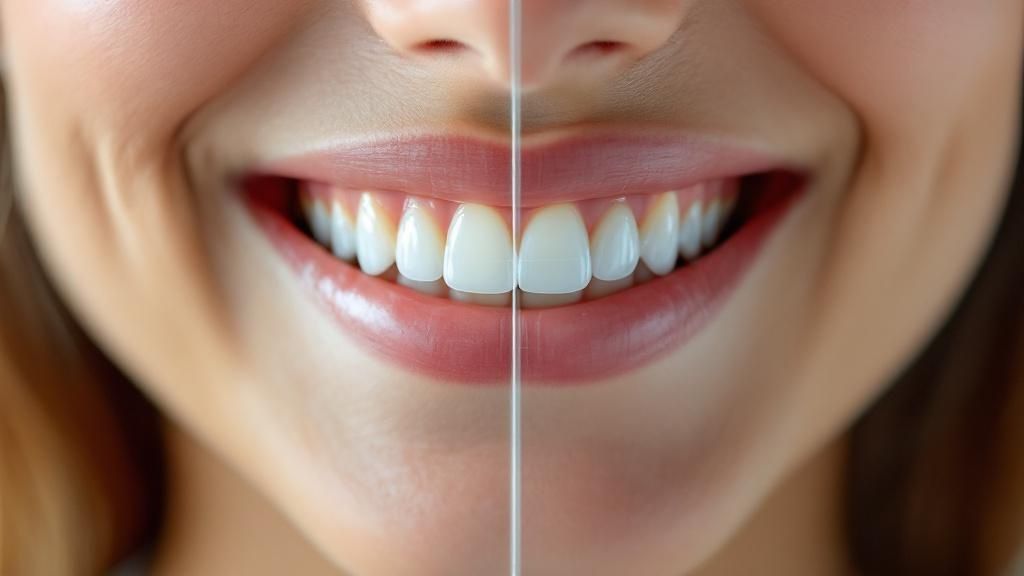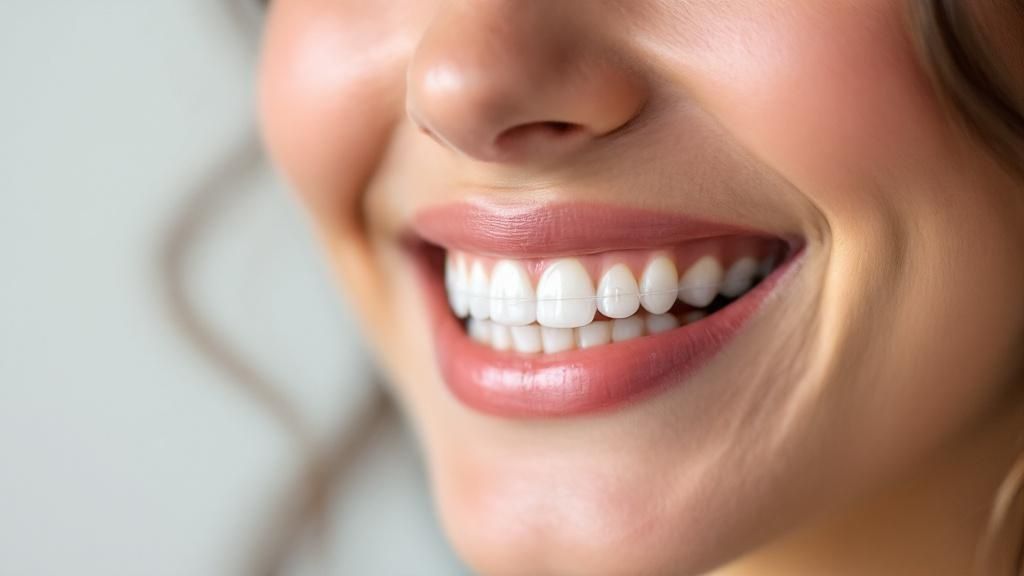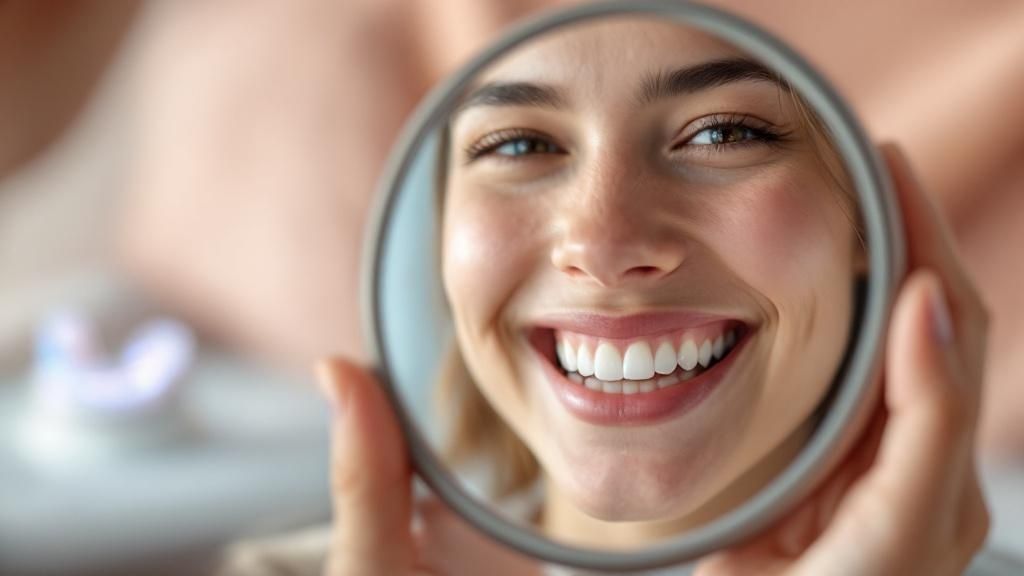
7 Clear Signs You Need Braces | Magic Fox Orthodontics
Your smile is one of your most powerful features, but sometimes it sends signals that things aren't quite right. While many people associate braces with purely cosmetic fixes for crooked teeth, the reality is that orthodontic treatment is essential for addressing underlying issues with your bite, jaw alignment, and overall oral health.
A misaligned bite, known clinically as malocclusion, can cause problems ranging from difficulty chewing and cleaning your teeth to chronic jaw pain and even speech impediments. Recognizing the early signs you need braces is the first step toward achieving a healthier, more confident smile that lasts a lifetime. For families in Huntington Beach and Fountain Valley, understanding these indicators helps clarify when it's time to seek professional advice.
This guide will walk you through the most common signs, helping you decode what your smile is telling you. We’ll explore what each sign looks like, why it matters, and how modern orthodontic solutions like Iconix esthetic brackets and Invisalign clear aligners can help create a balanced, functional smile.
1. Crowded or Overlapping Teeth
One of the most visually obvious signs you need braces is crowded or overlapping teeth. This issue arises when there isn't enough space in your jaw to accommodate all your teeth in a straight line, forcing them to twist, bunch up, or push others out of alignment.
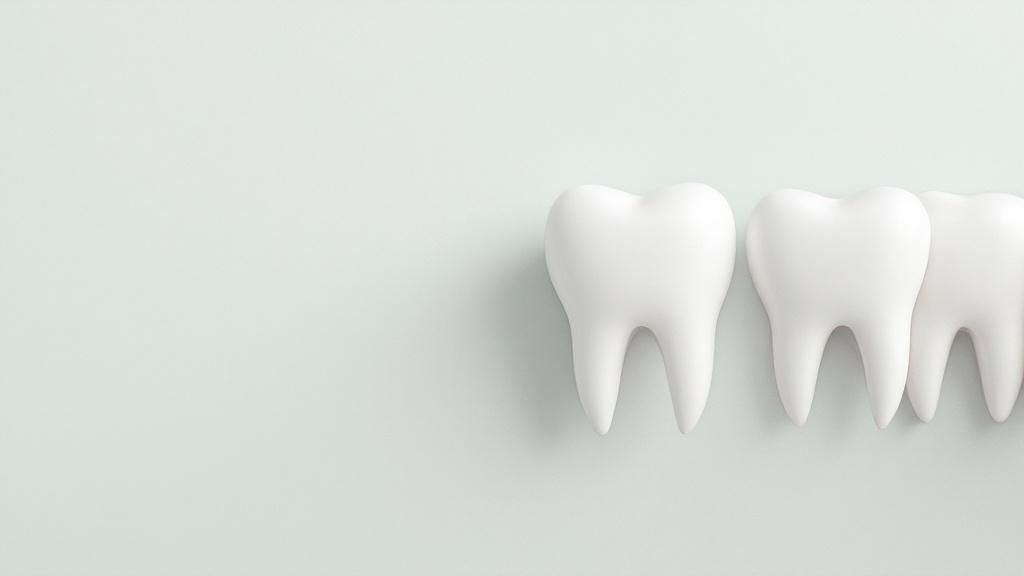
While many patients in the Huntington Beach area are concerned about the aesthetics of crowding, the health implications are just as significant. Tightly packed teeth create hard-to-reach areas where plaque and bacteria can thrive, making effective brushing and flossing nearly impossible. This dramatically increases your risk for cavities and gum disease.
Why Crowding is a Sign for Treatment
Addressing crowded teeth is about much more than just achieving a straighter smile; it’s a crucial step toward better long-term oral health. By creating the proper space, orthodontic treatment makes daily hygiene easier and more effective, preventing future dental problems.
At Magic Fox Orthodontics, we use advanced 3D scanning to precisely map out the crowding and design a personalized plan. Depending on your needs, we may recommend traditional braces, discreet Iconix brackets, or Invisalign to gently guide your teeth into their ideal positions. To understand more about the underlying issues, you can learn more about what causes crowded teeth on magicfoxsmiles.com.
Actionable Tips to Spot Crowding:
- Check Your Floss: Is it difficult to slide floss between certain teeth? Does the floss frequently shred or get stuck? This is a classic indicator of teeth being too close together.
- Look for Twists and Turns: Pay close attention to your bottom front teeth, as this is often the first place crowding becomes noticeable. See if any teeth appear twisted or sit behind or in front of their neighbors.
- Monitor Food Traps: Notice if food consistently gets lodged in the same spots. These areas are prime locations for decay to begin.
- Early Evaluation for Kids: If you spot crowding in your child’s smile, an early orthodontic consultation can be invaluable. Interceptive treatment can help guide jaw growth and make future treatment simpler.
2. Overbite (Upper Teeth Protruding)
An overbite is when the upper front teeth extend too far beyond the lower front teeth. While a small degree of overbite is perfectly normal, an excessive overbite, sometimes called "buck teeth," is a clear sign you may need braces.
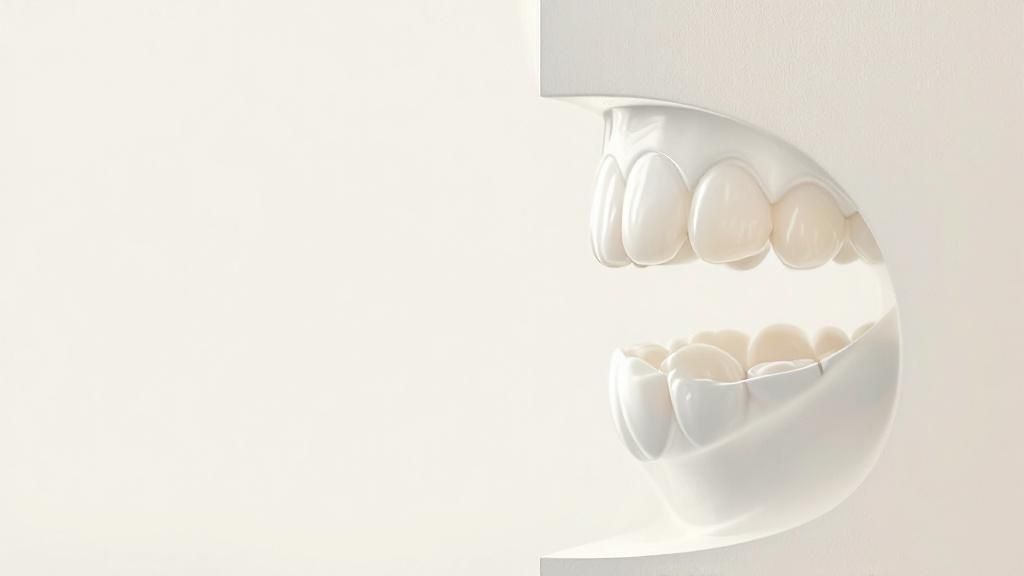
Many patients in Huntington Beach seek treatment for an overbite due to aesthetic concerns, but the functional problems are equally important. A deep overbite can cause the lower front teeth to bite into the roof of the mouth, leading to gum irritation. It can also cause unnatural wear on the teeth and strain on the jaw joints.
Why an Overbite is a Sign for Treatment
Correcting an overbite is crucial for protecting your teeth from damage and improving jaw function. By aligning the bite, orthodontic treatment ensures forces are distributed evenly across your teeth, preventing premature wear and potential jaw pain.
At Magic Fox Orthodontics, we treat overbites with solutions like our Iconix esthetic brackets or Invisalign. We sometimes use elastics or other appliances to help guide the jaw into proper alignment. To get a better idea of the treatment journey, you can learn more about how long braces take on magicfoxsmiles.com.
Actionable Tips to Spot an Overbite:
- Look at Your Profile: Observe your or your child’s side profile. Do the upper teeth or lip protrude significantly?
- Check the Bite: When you bite down naturally, check how much of the lower teeth are covered by the upper teeth. If you can barely see the lower teeth, the overbite is likely excessive.
- Notice Chewing Difficulties: Pay attention when eating. Difficulty biting into foods like sandwiches or apples can be a sign of an improper bite.
- Early Evaluation for Kids: The American Association of Orthodontists recommends an evaluation by age 7. Addressing an overbite early can help guide jaw growth and often simplify future treatment.
3. Underbite (Lower Jaw Protrusion)
An underbite is a type of malocclusion, or bite misalignment, where the lower teeth extend out past the upper teeth when the mouth is closed. This often happens because the lower jaw grows too far forward or the upper jaw is underdeveloped.
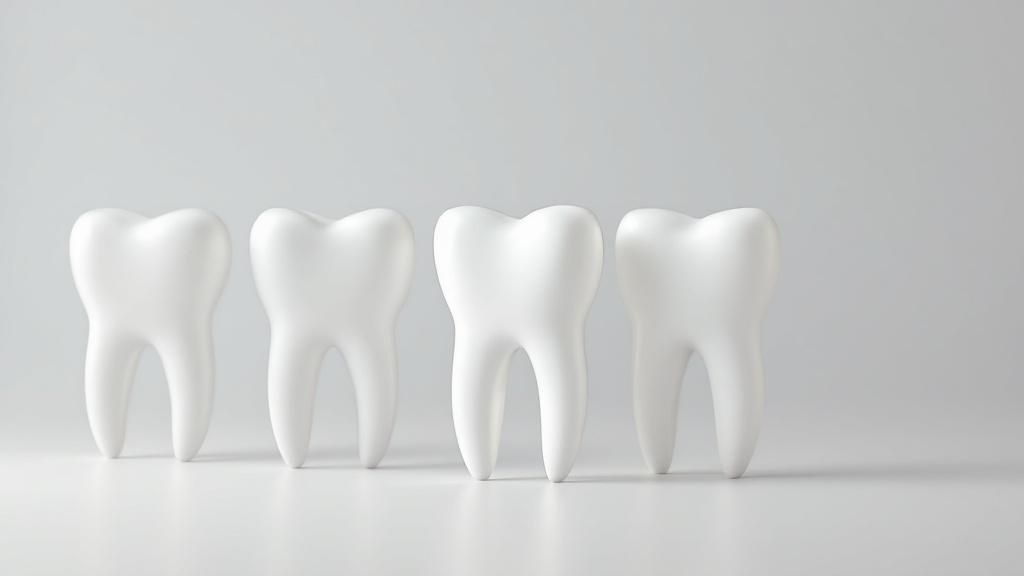
While the cosmetic appearance is a common concern, an uncorrected underbite can lead to serious health issues. These include difficulty biting and chewing, accelerated tooth wear, and even jaw pain or temporomandibular joint (TMJ) disorders. This makes an underbite one of the most critical signs you need braces.
Why an Underbite is a Sign for Treatment
Correcting an underbite is crucial for restoring proper bite function and preventing long-term dental damage. Early intervention, especially in children and teens in Huntington Beach, is key, as treatment can guide jaw growth and often prevent the need for more complex surgical procedures later.
At Magic Fox Orthodontics, we assess the root cause of the underbite to create a tailored treatment plan. This may involve traditional metal braces, Invisalign, or other specialized appliances to realign the jaw and teeth for optimal health and aesthetics.
Actionable Tips to Spot an Underbite:
- Check the Profile: Look at your or your child's face from the side. Does the lower jaw and chin appear to jut out noticeably? This is a primary visual cue.
- Observe Biting and Chewing: Notice if there is difficulty tearing food with the front teeth or if chewing seems inefficient or strenuous.
- Listen for Speech Issues: Certain sounds, particularly "f" and "s," can be difficult to pronounce clearly with an underbite, leading to a lisp.
- Seek Early Evaluation: If underbites run in your family, scheduling an orthodontic consultation for your child around age seven is highly recommended. Early assessment allows us to monitor jaw development and intervene at the ideal time.
4. Crossbite (Misaligned Bite Pattern)
A crossbite is a common sign you need braces where some of your upper teeth incorrectly sit inside your lower teeth when you bite down. This misalignment can affect a single tooth or groups of teeth and often points to underlying discrepancies in jaw development.
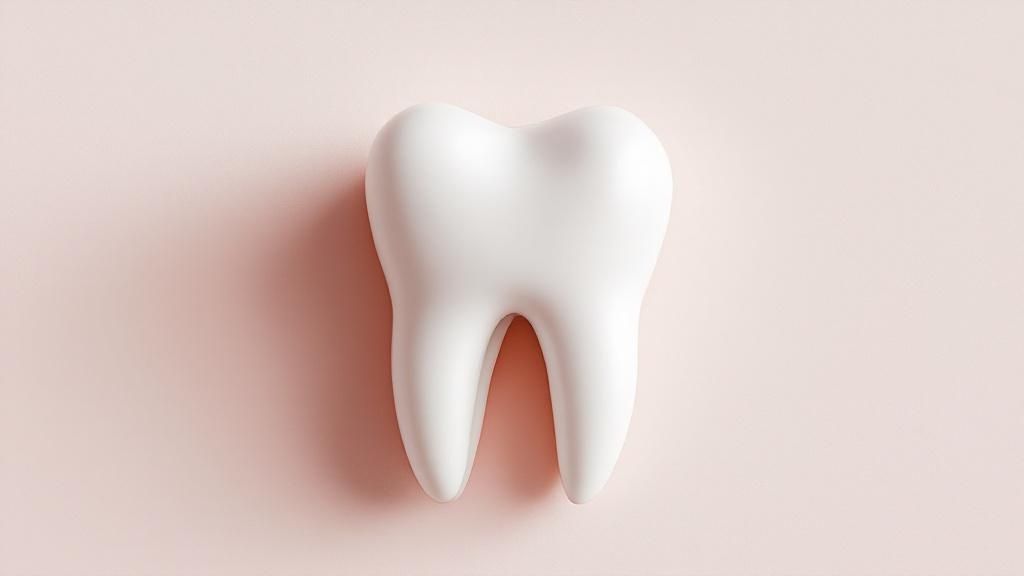
This type of bite issue can lead to more than just aesthetic concerns. A crossbite can cause uneven tooth wear, gum recession, and even asymmetrical jaw growth if left untreated, particularly in children. It may also force your jaw to shift to one side to find a comfortable biting position, leading to TMJ pain.
Why a Crossbite is a Sign for Treatment
Correcting a crossbite is essential for establishing a stable, functional bite and preventing long-term damage. Treatment guides the teeth and, in some cases, the jaw itself into proper alignment, ensuring forces are distributed evenly during chewing.
At Magic Fox Orthodontics, we use comprehensive diagnostics to determine the cause of the crossbite and create a targeted treatment plan. For many patients, correcting these issues is a key part of our approach, as you can see in our guide about how comprehensive orthodontic treatment perfects smiles in Huntington Beach.
Actionable Tips to Spot a Crossbite:
- Check Your Jaw Movement: Close your mouth slowly while looking in a mirror. Does your jaw shift to one side just before your teeth fully meet? This is a common compensation for a crossbite.
- Look for Uneven Wear: Examine the biting surfaces of your teeth. If you see significantly more wear on one side or on specific teeth, it could be due to a crossbite.
- Listen for Jaw Sounds: Pay attention to any clicking or popping sounds from your jaw joint when you open or close your mouth, as this can be related to bite misalignment.
- Early Evaluation is Key: For parents in the Fountain Valley or Huntington Beach area, having your child evaluated around age 7 is crucial. Early intervention can correct a crossbite and guide proper jaw growth.
5. Gaps and Spacing Issues
The opposite of crowding, excessive spacing between teeth is another clear sign you may need braces. These gaps, also known as diastemas, occur when there is too much room in your jaw for your teeth, or when teeth are undersized relative to the jawbone.
![Image of a smile with gaps between the teeth]
Gaps can leave your gums more exposed and vulnerable to injury from hard foods. They can also create pockets where food debris and plaque accumulate, leading to an increased risk of gum inflammation or cavities. For some patients, significant spacing can even interfere with proper speech.
Why Spacing is a Sign for Treatment
Closing unwanted gaps is about creating a more stable, functional, and aesthetically pleasing smile. Orthodontic treatment gently moves teeth together, eliminating spaces that can trap food and compromise gum health. This improves your smile's appearance and your overall oral hygiene.
At Magic Fox Orthodontics, we evaluate the cause of your spacing to create a targeted treatment plan using our Iconix esthetic brackets or Invisalign. These treatments are highly effective at consolidating spaces for a seamless, healthy smile. You can find out more about how we do braces close gaps on magicfoxsmiles.com.
Actionable Tips to Spot Spacing Issues:
- Look for Visible Gaps: The most common is a midline diastema, a gap between the two upper front teeth. Check for other noticeable spaces throughout your smile.
- Monitor Changes Over Time: Take photos every few months. Are existing gaps getting wider? This could signal an underlying issue that needs professional attention.
- Pay Attention to Your Gums: Notice if your gums feel sensitive or frequently bleed in areas with gaps, as this can be a sign of irritation from food impaction.
- Check for Speech Changes: If you or your child develop a lisp or have difficulty pronouncing certain sounds, it could be related to the way air flows through gaps between the teeth.
6. Open Bite (Teeth Don't Meet)
An open bite occurs when your upper and lower teeth fail to make contact when you close your mouth, leaving a noticeable gap. This is another key indicator that orthodontic intervention may be necessary.
This misalignment can lead to difficulties with speech and inefficient eating. Patients in Huntington Beach often report being unable to bite cleanly through foods like sandwiches, which is a classic sign of an anterior open bite and a practical reason to look for signs you need braces.
Why an Open Bite is a Sign for Treatment
Correcting an open bite is essential for restoring proper function to your jaw and teeth. Closing the gap helps prevent uneven wear on the back teeth, which often overcompensate for the lack of contact in the front.
At Magic Fox Orthodontics, we assess the root cause, whether it's a skeletal issue or a habit like tongue thrusting. We create a targeted treatment plan using traditional metal braces or Invisalign to achieve a healthy, functional bite.
Actionable Tips to Spot an Open Bite:
- Test Your Bite: Try to bite through a piece of lettuce or tear a piece of paper using only your front teeth. If you can't make a clean tear, you may have an open bite.
- Look in the Mirror: Close your teeth together naturally and look at your smile from the side. Can you see a distinct vertical gap between the edges of your upper and lower front teeth?
- Listen to Speech: Pay attention to how you or your child pronounces certain sounds. A lisp can sometimes be linked to the tongue pushing through an open bite.
- Address Habits Early: In children, prolonged thumb sucking, pacifier use, or tongue thrusting are common causes. Addressing these habits early can prevent an open bite from worsening.
7. Jaw Pain and TMJ Symptoms
Persistent jaw pain, clicking sounds, or a locking sensation in the jaw joint (TMJ) can be significant signs you need braces. When your teeth are misaligned, they can force your jaw into an unnatural position to chew or rest. This ongoing strain leads to inflammation and chronic discomfort.
This dysfunction can cause chronic headaches, difficulty chewing, and even jaw fatigue. Waking up with a sore jaw or hearing a pop when you yawn indicates that your bite is causing undue stress on your jaw's complex system of muscles and ligaments.
Why Jaw Pain is a Sign for Treatment
Correcting your bite with orthodontics can provide profound relief for TMJ-related symptoms. By aligning the teeth, braces or Invisalign allow the jaw to settle into its natural, most comfortable position, alleviating the strain that causes pain and dysfunction.
At Magic Fox Orthodontics, we evaluate how your bite contributes to jaw discomfort. A properly aligned bite not only creates a beautiful smile but also restores harmony and function to your entire jaw system.
Actionable Tips to Spot Jaw Issues:
- Keep a Symptom Diary: Note when your jaw hurts, clicks, or feels tired. Identifying triggers helps pinpoint the cause.
- Listen for Sounds: Pay attention to any clicking, popping, or grinding sounds when you open your mouth to eat or yawn. These are classic signs of TMJ dysfunction.
- Check for Uneven Wear: Do some teeth look significantly more worn down than others? This can indicate an imbalanced bite that is stressing your jaw.
- Seek a Professional Evaluation: If you experience any of these symptoms, a consultation with an orthodontist is crucial to determine if malocclusion (a bad bite) is the root cause.
Frequently Asked Questions About the Signs You Need Braces
How do I know if I really need braces?
You truly need braces if you have noticeable issues with your bite (malocclusion) like an overbite, underbite, or crossbite, or if crowding and spacing impact your oral hygiene. Persistent jaw pain is another strong indicator that orthodontic treatment could provide significant health benefits.
What is the best age to get braces?
While there's no single "best" age, the American Association of Orthodontists recommends an initial check-up around age 7. Many patients in areas like Goldenwest and Wintersburg get braces during their teen years, but adult treatment with options like Invisalign is also incredibly common and effective.
Are Iconix esthetic brackets better than traditional metal braces?
Iconix brackets are made of champagne-colored stainless steel, offering a more subtle and stylish look than traditional silver-colored metal braces. Functionally, they are just as effective, making them a popular choice for patients who want the reliability of braces with a more discreet appearance.
Will correcting my bite help with my headaches?
In many cases, yes. If your headaches are caused by jaw tension and muscle strain from a misaligned bite (malocclusion), orthodontic treatment can align your jaw to its proper position, often reducing or eliminating related headache pain.
How can I get braces if I live in Fountain Valley but your office is in Huntington Beach?
Our office at 17041 Beach Boulevard is conveniently located to serve families throughout the area, including Fountain Valley. Many of our patients find the short drive well worth it for our personalized care and advanced treatment options.
Your Next Step Towards a Healthier Smile in Huntington Beach
Recognizing the signs you need braces is a crucial first step, but taking action is what transforms your health and confidence. From crowded teeth and jaw pain to noticeable gaps or a misaligned bite, these indicators are more than just cosmetic concerns. They are important signals that your oral mechanics may need professional attention.
A properly aligned smile is the foundation of long-term oral health. It improves your ability to chew, simplifies cleaning, and reduces unnecessary wear on your teeth. Whether you are a parent in Fountain Valley considering early treatment for your child or an adult professional in the Oak View neighborhood seeking a discreet solution, understanding these signs is empowering.
At Magic Fox Orthodontics, we specialize in creating personalized treatment plans for every member of your family. We are proud to serve our community and offer a range of advanced, comfortable options, including:
- Invisalign Clear Aligners: A nearly invisible and removable option for teens and adults.
- Iconix Esthetic Brackets: Stylish, champagne-colored brackets that offer a subtle yet effective alternative to traditional metal.
- Traditional Metal Braces: A reliable and efficient solution for correcting even the most complex orthodontic issues.
Don't let uncertainty hold you back from achieving the healthy, functional smile you deserve. The most important takeaway is that these common signs have proven solutions. Your journey begins with a simple, no-obligation conversation.
Ready to transform your smile? Contact Magic Fox Orthodontics in Huntington Beach today to schedule your free consultation! We are here to answer all your questions about the signs you need braces and create a personalized roadmap to your perfect smile. Visit us online at Magic Fox Orthodontics or call us at (714) 594-5777 to get started.

